
Home » Travel Guides » Germany » 15 Best Things to Do in Halle (Germany)

15 Best Things to Do in Halle (Germany)
The largest city in Saxony-Anhalt, Halle is a former ducal town rich in history. The Baroque composer George Frideric Handel was born in Halle in 1685 and lived here to the age of 18. His birthplace has been preserved, and you can call in at the churches where he was baptised and played the organ.
The site of Handel’s baptism, the Marktkirche Unser Lieben Frauen also witnessed sermons by Martin Luther in 1545 and 1546 that rocked the Catholic church to the core. All through the Middle Ages up to 1680 Halle was part of the Archbishopric of Magdeburg, whose ruling archbishop-electors founded stately castles in the city at Moritzburg and the Neue Residenz.
Let’s explore the best things to do in Halle :
1. Marktkirche Unser Lieben Frauen

One of Central Germany’s finest Late Gothic churches, Halle’s 16th-century Marktkirche is unmissable thanks to its four towers.
These are four of the five towers that give Halle its nickname “Stadt der fünf Türme”. That unusual pair towers on the east side are watchmen’s towers and were linked high up by a bridge.
Martin Luther preached at the Marktkirche three times, and 140 years later, George Frideric Handel was baptised here.
Luther’s death mask and casts of his hands are kept in a small museum under the blue towers.
The bronze 15th-century baptismal font used for Handel’s baptism in 1685 is still on display.
Handel received his first organ lessons on the small organ above the altar, while Johann Sebastian Bach played the organ in the west gallery when it was inaugurated in 1716.
2. Halle State Museum of Prehistory

Saxony-Anhalt’s archaeological discoveries are shown in chronological order at this world-class museum.
The permanent exhibition begins at the start of the Stone Age and ends in the early Iron Age, roughly 2,000 years ago.
If there’s one item that you absolutely have to see, it’s the Nebra sky disk.
This bronze disc, 30 centimetres in diameter was dug up 60 kilometres away and dates back 3,600 years.
The Nebra sky disk is the oldest known representation of the night sky, depicting the stars, sun and crescent moon.
The work is so sophisticated that it was believed to be a forgery until its age was verified scientifically.
Look out for the museum’s famous special exhibitions, which have covered topics as diverse as alchemy, Pompeii, mammoths and scared art in recent years.
3. Händel-Haus

The Baroque composer George Frideric Handel was born at this Renaissance complex in 1685. His father, Georg had purchased the property in 1666, and the building itself dates back to at least 1558. The tradition of painting the facade yellow is from the first half of the 17th century, when the house was known as the Zum Gelben Hirsch (the Yellow Stag). The museum has three main strands: Handel, the musical history of the Halle region and a collection of historic musical instruments.
With 160 exhibits in chronological order you can track Handel’s early life in Halle and then his career in Europe from 1703 to 1759. There’s a mini Baroque theatre where you can watch an animated Handel perform, while that trove of instruments has 700 pieces including a Ruckers harpsichord made in Antwerp in 1599.
4. Halloren Chocolate Factory

In Halle since the start of the 19th century The Halloren Chocolate Factory is the oldest chocolate factory in Germany still in business.
More than two centuries of chocolate-making expertise is revealed at the museum, which has puzzles for little ones, antique chocolate-making equipment and multi-sensory installations like a listening station and scent wall.
At the “Pralineum” you watch Halloren’s chocolatiers in action behind a pane of glass and see firsthand the skill that goes into making pralines.
And then there’s a chocolate gallery, where 1.5 tons of chocolate has been processed into works of art.
5. Marktplatz

Fourteen streets in Halle lead to the city’s 16,000-square-metre Marktplatz, hosting many of the monuments on this list like the Marktkirche and Roter Turm.
People have been trading at Marktplatz since the 1100s when the first communal warehouse (a forerunner to department stores) was established for Halle’s dressmakers and fabric traders.
There’s a daily market from 09:00-18:00, Monday-Saturday, and the stalls for Halle’s Christmas market trade here.
One of the landmarks not on this list is a 3.20-metre statue of Handel, erected in 1859 on the 100th anniversary of his death.
He is pointing in the direction of England, his second home and burial place.
Beside that monument is the elegant Stadthaus (City Hall) in a Gothic and Renaissance Revival style from the 1890s.
6. Roter Turm (Red Tower)

Halle’s fifth tower is also the tallest, rising to 84 metres on Marktplatz just a few metres from the Marktkirche.
The tower was 88 years in the making, and was completed in the Late Gothic style in 1506. If you squint you can just make out the cluster of 246 spikes on the gilded orb at the very top of the spire.
As a free-standing campanile Halle’s Roter Turm has no equivalent in Germany.
The tower has a carillon of 76 bells, the largest in Europe with a total weight of almost 55 tons.
The smallest weighs only 10.7kg, while the largest is known as Dame Händel and at 2.36 metres in diameter is the third-largest playable bell in the world.
7. Kunstmuseum Moritzburg

Saxony-Anhalt’s art museum is in the residence of the Archbishops of Magdeburg.
The palace is an Early Renaissance building from the turn of the 16th century but was obliterated in the Thirty Years’ War a century later and stayed in ruins.
In 2010 the palace was adapted into a modern design by Spanish architecture firm Nieto Sobejano.
The courtroom and banquet hall are historic and their coffered ceilings and wood-panelled walls reveal the splendour of the original palace.
The 19th-century galleries have paintings by Caspar David Friedrich, Anselm Feuerbach and Max Klinger, along with sculpture by Rodin and Maillol.
In the modern halls, there’s a superb array of art by Lyonel Feininger, Klee, Klimt, Kandinsky, Kirchner, Ernst and many more luminaries of Symbolism, Expressionism and New Objectivity.
8. Halle-Neustadt

West of the Altstadt, on the opposite bank of the Saale is Post-War Germany’s largest construction project.
Begun in the 1960s and built for Halle’s chemical plant workers, Halle-Neustadt was a socialist model city for 100,000 people.
Neustadt was designed to be healthy, modern and comfortable, but also instil an ideology in its inhabitants.
In these monolithic concrete towers all apartments were aligned to capture the sun, and distances between amenities was minimised to avoid traffic.
Almost half of all the space was allocated as parkland, while the rapid transit railway delivered workers to their factories in a matter of minutes.
Now, the development has seen better days, and plans are being floated for regeneration.
9. Stadtgottesacker (City Cemetery)

Originally east of the city walls, the Stadtgottesacker is a Renaissance cemetery created in 1557. The design is based on Pisa’s Camposanto Monumentale, and the complex is seen as a masterpiece of German Renaissance architecture.
The cemetery is enclosed by a wall, and facing inwards are 94 beautifully ornamented arcades sheltering tombs.
In 1882 a survey determined that 92 different stonemasons worked on the reliefs on the arcades.
Above the arch on the inner entrance there’s a relief portrait of the cemetery’s designer Nickel Hoffmann.
You can also locate the graves of some important personalities like Georg Händel (father), the 17th-century philosopher Christian Thomasius and 18th-century Lutheran clergyman and philanthropist August Hermann Francke.
10. The Francke Foundations

August Hermann Francke’s contribution to Halle is this orphanage and school founded in 1695. Within 30 years the Francke Foundations had become a large educational complex with teacher training facilities and even businesses like a publishing house and pharmacy.
In line with Reformation ideals Francke’s plan was to provide an education for children regardless of social strata, based on practical learning and taking into account the individual needs of every child.
Those educational concepts were unheard of at the time, and you can take a tour of the site, which includes the “Lange Haus”, the longest half-timbered building in Europe.
A high point is Francke’s Cabinet of Artefacts and Curiosities begun as an educational tool, and rich with natural and man-made objects like minerals, plant specimens, art and coins.
11. Hallors and Saline Museum

Salt has been processed in Halle since the Bronze Age.
That is down to the saline wells, a geological curiosity oddity producing concentrated brine.
The name Hallors comes from a brotherhood of salt-workers founded at the end of the 15th century.
They work to preserve Halle’s salt heritage to this day.
This museum is in the old Royal Prussian Saltworks, preserved facilities from the 1700s to the 1900s.
Here you can see how the brine was boiled in ceramic evaporation vessels to produced salt crystals.
Even as a museum the saltworks produce 70 tons of salt a year, all sold to local businesses.
There are also glass cases containing ceremonial artefacts related to the brotherhood like cups and trophies dating back to the 17th century.
12. Hallescher Dom

Halle’s Cathedral dates to the 13th century and is the oldest church building in the city.
What started out as a simple Dominican monastery church was transformed in 1520 by Cardinal Albert of Brandenburg, the Archbishop of Magdeburg.
Together with the Neue Residenz palace next door he constructed the most powerful monastery north of the Alps at the time.
The church is 68 metres in length and has three naves, and Germany’s first example of a rounded gable on its facade.
The interior is still rich with Renaissance art, the best of which is the cycle of 17 statues on the pillars, dating to 1525 and depicting Christ and the Apostles.
Handel was organist at the Hallescher Dom for a year in 1702-03.
13. Neue Residenz

The other showpiece of Cardinal Albert’s reconstruction project was a lavish Renaissance palace next door to the cathedral and built in 1531. Hints of Italian Renaissance architecture are visible in its arches and courtyards.
In its heyday the two-storey building was described as the richest in Central Germany and although not much of that glory has made it to the 21st century it’s an engrossing place to be.
Albert’s coat of arms has been preserved on the facade facing the street, and in the summer you can go through to the courtyard.
In August there are performances during the annual Handel Festival.
And over the last ten years the gardens are redecorated every year with a different theme as part of an initiative to help the city’s long-term unemployed.
14. Beatles Museum

On Alter Markt, in a grand Baroque residence from 1708 is a museum for a more modern music phenomenon.
Beatles fanatic Rainer Moers built up a collection of memorabilia for the Merseyside group from 1964 to 1975, covering the lifespan of the Beatles (1960-1970) and the artists’ solo careers.
The museum was a travelling exhibition at first before settling in Halle in 2000. There are 3,500 exhibits for almost anything Beatles-related, be it vintage posters, autographs, stamps, rare LPs, photos, magazines or fan souvenirs.
15. Zoologische Garten Halle

Halle’s zoo is often called Bergzoo (Hill Zoo) as it clings to the 130-metre Reilsberg in the north of the city.
The terrain around the enclosures may be steep, which can be tricky if you have kids under five.
But there are constant views of the city, which are most memorable from the lookout at the top.
The zoo was founded in 1901 and since Reunification almost every habitat has been reconfigured.
The indoor crocodile house for example has alligators and crocodiles in a heated environment, while iguanas and exotic birds are able to roam freely in the tropical house.
The newly renovated big cat enclosures have Southwest African lions, jaguars and Malaysian tigers, while attached to this is a “predator house” for boa constrictors and agamas.
15 Best Things to Do in Halle (Germany):
- Marktkirche Unser Lieben Frauen
- Halle State Museum of Prehistory
- Händel-Haus
- Halloren Chocolate Factory
- Roter Turm (Red Tower)
- Kunstmuseum Moritzburg
- Halle-Neustadt
- Stadtgottesacker (City Cemetery)
- The Francke Foundations
- Hallors and Saline Museum
- Hallescher Dom
- Neue Residenz
- Beatles Museum
- Zoologische Garten Halle
- 1 Understand
- 2.1 By plane
- 2.2 By train
- 3.1 By tram
- 5.1 Festivals
- 7.2 Mid-range
- 7.3 Splurge
- 8.1 Bars and pubs
- 9.2 Mid-range
- 9.3 Splurge
- 10.1 Internet
Halle is the largest city in Saxony-Anhalt , Germany with a population of 233,700. Located on the river Saale, it is often referred to as Halle an der Saale , or Halle (Saale) for short, to distinguish it from other municipalities in Germany sharing the same name.
Halle has always been an important industrial centre - its industrial heritage spans salt mining, chemical industries and chocolate confectionery. Internationally, Halle is perhaps best known as the birthplace of the Baroque composer Georg Friedrich Händel, who later went on to a successful career in London .
Understand [ edit ]
Halle owes its existence to brine springs: salt has been produced in the region since the Bronze Age. The name Halle probably stems from the boiling "hall" of the salt works. The oldest document mentioning "Halla" dates from 806 AD. From the 10th to 17th century, Halle belonged to the Archbishopric of Magdeburg , temporarily serving as the second residence of the Prince-Archbishop, who was both religious leader and political ruler of the territory. An important trade centre, Halle was a member of the Hanseatic League during the late Middle Ages. After the Protestant Reformation , the Archbishopric became the secular Duchy of Magdeburg before being merged into the Kingdom of Prussia .
Baroque composer George Frideric Handel was born in Halle in 1685 but moved to Hamburg at age 18 and later became famous in London . With its university (founded in 1694) and August Hermann Francke's Foundations (since 1698), Halle was an educational centre during the Age of Enlightenment. Thanks to its university, the picturesque landscape of the Saale valley and ruined castles in the surroundings, Halle was a place-to-go for Romantic poets of the early 19th century, namely Joseph von Eichendorff who studied in Halle and composed numerous poems during his rambles. The composer Johann Friedrich Reichardt's garden near Giebichenstein castle was considered the "shelter of Romanticism".
The city was connected to the Leipzig –Magdeburg railroad in 1840. Halle soon became an industrial centre with notable chocolate, chemical and rail vehicle construction plants. During the communist rule , an extensive new town, Halle-Neustadt (colloquially Ha-Neu , homophonous with Hanoi ), was built west of the city. It was declared an independent city in 1967 and was home to more than 90,000 inhabitants, mostly workers of the chemical plants, at its peak in 1980. It was reunited with Halle proper in 1990. One of Halle's most famous sons is the politician Hans-Dietrich Genscher (1927–2016) who moved to West Germany during the country's partition, becoming foreign minister and leader of the liberal FDP. Halle's chemical industries broke down after the German reunification, leading to a massive loss of jobs but also to a recovery of the terribly polluted environment. New jobs were created in the service sector, science and technology. Halle is the seat of the German National Academy of Sciences Leopoldina and many startups. While separated by a state border since 1990, Halle and Leipzig are closely integrated with one another, sharing an S-Bahn system and an airport and many commuters move between the two or from suburbs of one to the other.
Get in [ edit ]
By plane [ edit ].

Leipzig/Halle Airport ( LEJ IATA ), sometimes called Schkeuditz Airport, is 30 km away from central Halle. The airport is the second biggest airport in Eastern Germany after Berlin . Trains between the airport and Halle Central Station run roughly every 30 minutes, alternating a S-Bahn (S 5X) and an IC-train enroute to Hanover. The trip takes 11 minutes and costs €4.20 (S-Bahn) or €6 (IC). The train station is below the terminal building and can be reached by stairs, escalators and elevators.
Berlin's airport ( BER IATA ) is less than two hours away by train and offers more direct flights.
By train [ edit ]

Deutsche Bahn operates regular train service between Halle and nearby cities such as Leipzig (€7.60, 25 minutes), Lutherstadt Eisleben (€9.50, 30 minutes), Dessau (€14, 50 minutes), Magdeburg (€22, 50 minutes), Jena (€20, 60 minutes), Weimar (€20.50, 60 minutes), Lutherstadt Wittenberg (€15, 65 minutes).
High-speed trains are available to major cities in Germany including Erfurt (€40, 30 minutes), Berlin (€49, 70 minutes), Frankfurt (€88, 2:40 hours), Munich (€117, 3 hours), Hamburg (€106, 3:15 hours). Prague (€66, 4:40 hours) can be reached with an additional transfer in Dresden ; or by train and bus via Leipzig (3.5 hours). Tickets may be much cheaper if booked in advance.
By bus [ edit ]
see long distance bus travel in Germany
By car [ edit ]
From Leipzig , take the A14 west to the B100.
Get around [ edit ]

By tram [ edit ]
Hallesche Verkehrs-AG (HAVAG) operates the local surface street tram. It passes most major attractions downtown and will take you to and from the main train station. Tickets are available at the office in the Marktplatz, from vending machines or from the drivers. 1-hour tickets cost €2.20 if bought from a vending machine, somewhat more if bought from the driver. Day passes cost €5.

See [ edit ]
Do [ edit ].
- Reederei Riedel River Tours . Tu-Su hourly 10:00-18:00 . Runs 45-minute river tours. Adult: €5 .
Festivals [ edit ]
- Handel Festival . In the second week of June.
Buy [ edit ]
Leipziger Straße is the main shopping street in downtown Halle. It branches off of the southeast corner of the Marktplatz. There you will find many retail shops and chain fast food restaurants.
Eat [ edit ]
Budget [ edit ].
Make sure you try some döner kebap. It's heavily Germanized Turkish food. Halle has some of the best döner in Germany .
- 51.484352 11.966322 1 Ökoase , Kleine Ulrichstraße 2 . Vegetarian restaurant popular among the hippie crowd. Try the Arabic tomato soup, Greek vegetable stew, or Swiss chard coconut soup. Only open for lunch on weekdays. Soups €6, mains €9-11 . ( updated Feb 2023 )
- 51.480283 11.973183 2 Gaststätte Zum Brotkasten , Sternstraße 8 . German restaurant ( updated Feb 2023 )
- 51.486738 11.966839 3 Bagel 29 , Große Ulrichstraße 29 . ( updated Feb 2023 )
- 51.487959 11.968233 4 MC-FT , Weidenplan 2 . Bistro ( updated Feb 2023 )
- 51.481428 11.964105 5 Tristan , Bornknechtstraße 2 . Canteen ( updated Feb 2023 )
- 51.484368 11.972208 6 Toros Döner , Mittelstraße 14 . Kebab and other Turkish specialties. ( updated Feb 2023 )
- 51.480118 11.980466 7 Mr. Baguettkov , Marienstraße 3 . Baguettes ( updated Feb 2023 )
Mid-range [ edit ]
- 51.483721 11.966769 8 Gasthaus "Zum Schad" , Kleine Klausstraße 3 ( Take tram 7, 8, 12, 6, or 3 to Reileck ). German restaurant and private brewery that boasts having served Mikhail Gorbachev. ( updated Feb 2023 )
- 51.485259 11.968598 9 NT Cafe , Große Ulrichstraße 51 . Artsy place affiliated with the Neues Theater (New Theatre). ( updated Feb 2023 )
- 51.480722 11.971354 10 Restaurant Schnitzelwirtin , Große Märkerstraße 18 . German restaurant ( updated Feb 2023 )
- 51.482691 11.967274 11 Restaurant Mönchshof , Talamtstraße 6 . German restaurant ( updated Feb 2023 )
- 51.484624 11.965669 12 Dompfaff-Restaurant , Domplatz 5 . German restaurant ( updated Feb 2023 )
- 51.480372 11.972948 13 Mittelalterliche Burgschänke Zum Ritter , Sternstraße 7 . Middle-age style ( updated Feb 2023 )
- 51.485867 11.966981 14 Roots , Große Ulrichstraße 23 ( 5 minute walk north on Große Ulrichtstraße from the market square. Watch for a sign on the left side of the street and then go down a small alleyway. ). Excellent modern European and German food. Plates are mostly €20 and up. ( updated Feb 2023 )
Splurge [ edit ]
- 51.503272 11.96652 15 Restaurant Alchimistenklause , Reilstraße 47 . ( updated Feb 2023 )
Drink [ edit ]

Bars and pubs [ edit ]
- 51.48517 11.96645 1 Café Noire , Kleine Ulrichstraße 30 . It is by far the best bar/cafe on Kleine Ulrichstraße.
- 51.48382 11.96859 2 Hallesches Brauhaus , Große Nikolaistraße 2 . Brewery that also serves good food.
- 51.49815 11.95547 3 Lucy , Burgstraße 48 ( Take tram 8 to Volkspark ), ☏ +49 345 1717740 , [email protected] . M-Th 18:00-01:00, F Sa 18:00-02:00 . Bar that has lots of live pub music.
Clubs [ edit ]
- 51.49182 11.96781 4 Klub Drushba , Kardinal-Albrecht-Straße 6 . Indie club with good dance parties.
- 51.50299 11.95696 5 Objekt 5 , Seebener Straße 5 ( Take the 7 or 8 to Burg Giebichenstein and it's a short walk from there ). Great indie club and cafe. Folk and rock music and good food.
- 51.48563 11.96654 6 Potemkin , Kleine Ulrichstraße 27 .
- 51.48697 11.96396 7 Turm , Friedeman-Bach-Platz 5 . Student club. Techno, house, hip-hop, drum & bass.
Sleep [ edit ]

- 51.48439 11.96269 1 Hostel No5 , Robert-Franz-Ring 5 ( Tram 10, 11, 94 or bus 91 to Ankerstraße ), ☏ +49 177 7431263 . Dorm bed: €13; Single: €21 .
- 51.48629 11.97597 2 Jugendherberge Halle , Große Steinstraße 60 ( Tram to Stadtbad ), ☏ +49 345 202 47 16 , [email protected] . Located in an old school in the city center. Dorm bed: €16.50; Single: €21.50; Bed linens: €3.50; €3 surcharge if 27 or older .

- 51.456961 12.035315 3 KAHSA Apartments , Zum Planetarium 36 ( Bus line 43 to Kanena, metro line S3 to Halle Messe ), ☏ +49 345 5800115 , [email protected] . Check-in: 15:00 , check-out: 10:00 . 10 smaller and bigger vacation rentals. All accommodations have internet and parking. Tourists as well as business travellers welcome. ( updated Aug 2018 )
- 51.498218 11.95765 4 Ferienwohnungen "Frau Pritzkow"/"Herr Gose" , Große Gosenstraße 8, 06114 Halle (Saale) ( Tram to Volkspark or Landesmuseum für Vorgeschichte ), ☏ +49 345 5211629 , [email protected] . Two holiday flats for up 2 or 5 persons, respectively. Located in Halle Giebichenstein ( updated Mar 2023 )
- 51.49161 11.97715 5 City Hotel am Wasserturm , Lessingstraße 8 ( Tram 6, 12, 95 to Lessingstraße ), ☏ +49 345 29820 . From €100 . ( updated Jan 2018 )
- 51.4736 11.96747 6 Esprit Hotel , Torstraße 7 ( Tram 1, 3, 6, 8, 11, 95 or bus 30, 97, 99 to Rannischer Platz ), ☏ +49 345 212200 . €42-60 .
- 51.48781 11.97249 7 Hotel Marthahaus , Adam-Kuckhoff-Straße 5 ( Tram 6, 10 to Stadtbad ), ☏ +49 345 51080 . Run by a Christian mission. Soft carpet, well furnished, stained glass windows in the lounge. Beautiful dining hall. Single: €45-60; Double: €65-85 .
- 51.4799 11.97557 8 Hotel Schweizer Hof , Waisenhausring 15 , ☏ +49 345 503068 .
- 51.48006 11.92613 9 Tryp by Wyndham Halle , Neustädter Passage 5 ( Tram 2, 9, 10 or bus 21, 34, 91 to Zentrum Neustadt or S-bahn train (S7) to Halle Neustadt station ), ☏ +49 345 6 93 10 , fax : +49 345 6 93 16 26 . Check-in: 14:00 , check-out: 12:00 . Formerly the Best Western Grand City Hotel €58 + .
- 51.48528 12.00275 10 Hotel Westfalia Halle , Grenzstraße 35 ( Tram 10, 94 or bus 32, 91, 97 to Betriebshof Freiimfelder Straße ), ☏ +49 345 5606291 . €38-50 .
- 51.48248 11.96172 11 Ankerhof Hotel , Ankerstraße 2a ( Tram 10, 11, 94 or bus 91 to Ankerstraße ), ☏ +49 345 2323200 . Former Royal Customs Office. Gym and saunas. Some rooms have river view. $87-116 .
- 51.49833 11.96501 12 Apart-Hotel Halle , Kohlschütterstraße 5 ( Tram 6 to Adolfstraße ), ☏ +49 345 52590 , [email protected] . Really nice murals in the suites. Sauna. Single: €72; Double: €89 .
- 51.47886 11.99448 13 Hotel Atlas Halle , Delitzscher Straße 32 ( Tram 7, 10 or bus 44, 91 to Freiimfelder Straße ), ☏ +49 345 6853630 . $59 - $99 .
- 51.43162 11.98398 14 Hotel Eigen , ☏ +49 345 77556 . €69 .
- 51.479926 11.981146 15 Dorint Charlottenhof Halle (Saale) , Dorotheenstraße 12 ( Tram 2, 4, 7, 9, 12 to Riebeckplatz ), ☏ +49 345 29230 , [email protected] . 4 star hotel that caters to the business crowd. Pool, gym, sauna. €57-108. Breakfast: €15 .
Connect [ edit ]
Internet [ edit ], go next [ edit ].
- The Central German Lake District surrounds Halle and Leipzig.
- Merseburg , 15 km south, more than thousand-year-old town with interesting old centre, Romanesque/Gothic cathedral and Renaissance palace (10 minutes by train, or cycle up the Saale bike trail)
- Eisleben , 30 km west, birth place of Martin Luther (30–40 minutes by train)
- Leipzig , 40 km east, Halle's "twin", trade city, cultural metropolis and economic "boom town" of East Germany, half an hour train ride away.
- Naumburg , 50 km south, impressive Romanesque cathedral, home town of philosopher Friedrich Nietzsche, centre of the Saale-Unstrut cultural landscape and wine-growing region (30–40 minutes by train, or cycle up the Saale bike trail)
- Dessau , 50 km northeast, centre of the Dessau-Wörlitz Garden Realm, seat of the 1920s Bauhaus art school, capital of classical modern architecture (50–55 minutes by train, change in Bitterfeld or Köthen)
- Wittenberg , 75 km northeast, important city during the late Middle Age and Renaissance, origin of Martin Luther's Protestant Reformation (just over an hour by train)
- Magdeburg , 90 km north, state capital on the river Elbe with huge Gothic cathedral and one of Germany's most important Romanesque monasteries (50 minutes by intercity train)
- Weimar , 90 km southwest, centre of classical culture, home of Germany's national poets Goethe and Schiller, composers Liszt and Richard Strauss, Friedrich Nietzsche, the early Bauhaus school and Buchenwald concentration camp (one hour by train)
- Erfurt , 115 km southwest, state capital of Thuringia, medieval old city (35 minutes by ICE high-speed train)
- Has custom banner
- Has map markers
- Has mapframe
- Do listing with no coordinates
- Has routebox
- Has Geo parameter
- Saxony-Anhalt
- All destination articles
- Usable cities
- Usable articles
- City articles
- Pages with maps
Navigation menu
Exploring The Charm Of Halle, Germany: Top Things To Do And See
- Last updated Jul 19, 2023
- Difficulty Beginner
- Category United States
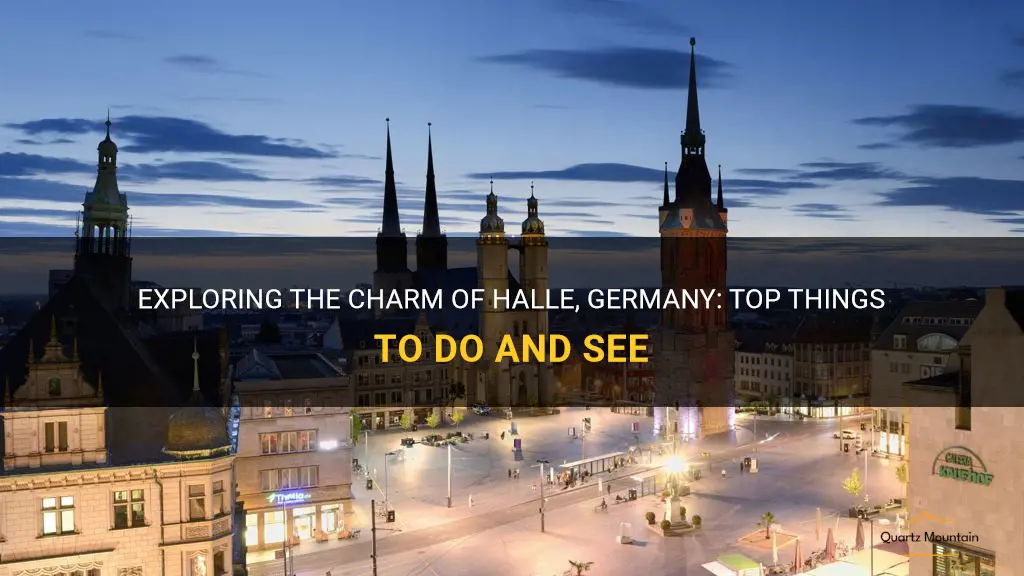
Halle, Germany, with its rich history, stunning architecture, and vibrant cultural scene, is a hidden gem waiting to be discovered. Nestled on the banks of the Saale River, this charming city offers a plethora of activities and sights that will captivate and enchant visitors. From exploring the impressive Gothic-style Marktkirche to strolling through the picturesque gardens of the Francke Foundation, Halle has something for everyone. Whether you're a history buff, art enthusiast, or simply a lover of all things beautiful, Halle will surely leave you in awe. Join us as we embark on an unforgettable journey to uncover the hidden treasures of this captivating city.
What You'll Learn
Visit the marktplatz in the city center, explore the historic landmarks such as the market church and the red tower, discover the händel house museum, dedicated to the famous composer georg friedrich händel, take a stroll along the saale river and enjoy the scenic views, visit the francke foundations, a unesco world heritage site, explore the botanical garden and admire the diverse plant species, attend a concert or performance at the halle opera house, explore the collection of art at the moritzburg art museum, visit the halloren chocolate factory and learn about the city's sweet history, explore the numerous green spaces and parks, such as the peißnitz island.

Halle, Germany, is a beautiful city located in the state of Saxony-Anhalt. It is known for its rich history, stunning architecture, and vibrant cultural scene. One of the must-visit places in Halle is the Marktplatz, which is located in the city center.
The Marktplatz in Halle is the heart of the city and is surrounded by picturesque buildings that showcase different architectural styles. One of the most prominent buildings on the square is the beautiful Halle City Hall, which stands tall and proud with its stunning facade. This impressive structure is a perfect example of Renaissance architecture and is a true testament to the city's past.
Apart from the City Hall, the Marktplatz is also home to various other historical buildings, such as the Red Tower, a medieval tower that offers panoramic views of the city and the surrounding area. Visitors can climb up to the top of the tower and enjoy breathtaking views of the city's skyline.
The square itself is always bustling with activity. It is a popular meeting place for locals and visitors alike, and there are often small markets, concerts, and events taking place. The atmosphere in the square is lively and vibrant, and it is a great place to soak in the local culture and experience the charming Halle way of life.
In addition to the architectural wonders and cultural events, the Marktplatz is also home to numerous cafes, restaurants, and shops. Visitors can take a break from exploring and enjoy a cup of coffee or a traditional German meal while watching the comings and goings of the square.
For those interested in history, the Marktplatz also offers the opportunity to learn about Halle's past. The square is home to several statues and monuments that commemorate important figures and events in the city's history. Taking a walk around the square can be like taking a step back in time and immersing yourself in the city's rich heritage.
Overall, a visit to the Marktplatz in Halle is a must for anyone visiting this charming city in Germany. Whether you are interested in history, architecture, or simply want to enjoy the lively atmosphere, the square offers something for everyone. So, make sure to add it to your itinerary and explore all that the Marktplatz has to offer.
12 Fun Activities to Explore Near Chatsworth GA
You may want to see also
Halle is a beautiful city in Germany that is rich in history and culture. The city is located on the Saale River in the eastern part of Germany, making it easily accessible for tourists. One of the main attractions in Halle is its historic landmarks, such as the Market Church and the Red Tower.
The Market Church, also known as the Church of St. Mary, is one of the most important religious buildings in Halle. This impressive Gothic-style church dates back to the 16th century and is known for its stunning architecture and beautiful interior. The church is located in the heart of the city's historic center and is a must-visit for any visitor to Halle.
Another iconic landmark in Halle is the Red Tower, which is a symbol of the city. This medieval tower stands tall at over 70 meters high and offers breathtaking views of the surrounding area. The Red Tower is located near the Market Church and is a popular spot for tourists to visit. Visitors can climb to the top of the tower and enjoy panoramic views of the city and the Saale River.
In addition to these historic landmarks, Halle also boasts a number of other attractions. The city is home to several museums, including the State Museum of Prehistory, which houses a vast collection of artifacts from prehistoric times. The Museum of Art contains a wide range of modern and contemporary artworks, while the Beatles Museum showcases the history of the famous band and their connection to Halle.
Halle is also known for its vibrant cultural scene, with numerous theaters, galleries, and music venues. The city's opera house, known as the Halle Opera, is renowned for its high-quality performances, while the Franckesche Stiftungen is a unique institution that combines social work, education, and history. Visitors can also enjoy a stroll along the picturesque riverfront or explore the charming old town with its narrow streets and historic buildings.
In conclusion, Halle is a city that offers a rich blend of history, culture, and natural beauty. While exploring the city, be sure to visit its historic landmarks such as the Market Church and the Red Tower. These landmarks are not only visually stunning but also offer insights into the city's past and its significance in German history. Whether you are interested in architecture, art, or simply want to soak in the charm of this beautiful city, Halle is a destination that should not be missed.
12 Fun Outdoor Activities to Explore Near Paint Mines
Halle, Germany is a city known for its rich musical heritage and has become a popular destination for music enthusiasts from around the world. One of the most notable attractions in Halle is the Händel House Museum, dedicated to the famous composer Georg Friedrich Händel.
Situated in the center of the city, the Händel House Museum is housed in the building where Händel was born on February 23, 1685. The museum offers visitors a unique opportunity to explore the life and work of this renowned composer.
Upon entering the museum, visitors are greeted by a collection of artifacts and memorabilia related to Händel's life. The museum showcases his childhood and early musical training in Halle, and also provides insights into his later years in London, where he achieved great success.
One of the highlights of the museum is the recreated Baroque music room. This room is designed to resemble Händel's original music room, complete with period instruments and furnishings. Visitors can imagine themselves stepping back in time and experiencing the music of Händel in an authentic setting.
In addition to the music room, the Händel House Museum also features a collection of original manuscripts, letters, and personal belongings of Händel. These items give visitors a glimpse into the composer's creative process and offer a deeper understanding of his music.
The museum also hosts regular concerts and recitals, allowing visitors to enjoy live performances of Händel's works in the very place where he was born. These concerts feature talented musicians from around the world, and are a must-see for any classical music lover.
After exploring the Händel House Museum, visitors can take a stroll through the charming streets of Halle and visit other landmarks associated with Händel. These include the Händel Monument and the Händel-Haus, which was Händel's residence during his time in Halle.
Overall, a visit to the Händel House Museum in Halle, Germany is a fascinating and enriching experience for music enthusiasts and history buffs alike. It offers a unique insight into the life and work of one of the greatest composers of all time, and is a must-visit destination for anyone interested in classical music.
12 Fun Things to Do in Strand, Cape Town
Halle, Germany is a picturesque city located along the banks of the Saale River. With its rich history, charming architecture, and stunning natural landscapes, it is a perfect destination for those looking to relax and unwind in a serene environment. One of the best ways to experience the beauty of Halle is by taking a stroll along the Saale River and enjoying the scenic views it offers.
As you walk along the river, you will be greeted with breathtaking vistas of lush greenery, sparkling waters, and vibrant flowers. The Saale River is known for its crystal-clear waters, which reflect the surrounding landscape, creating a mesmerizing sight. The riverbanks are dotted with parks, gardens, and trees, providing the perfect ambiance for a leisurely walk or a romantic picnic.
One of the highlights of a walk along the Saale River is the opportunity to explore the various historical landmarks and architectural wonders that line its banks. Halle boasts a rich history, and many of its historic buildings are located near the river. The iconic Giebichenstein Castle, a medieval fortress situated on a hill overlooking the river, is a must-visit attraction. Its impressive architecture and captivating history make it a popular spot for tourists and locals alike.
Another notable landmark along the Saale River is the Francke Foundations, a UNESCO World Heritage site. This institution was founded in the 17th century and is known for its remarkable Baroque-style buildings and educational facilities. Take a moment to admire the beautiful architecture and learn about the history of this renowned institution.
For nature enthusiasts, the Saale River offers a chance to explore the local flora and fauna. The river is home to a diverse range of plant and animal species, and birdwatchers will delight in spotting various bird species along the riverbanks. Take your time to appreciate the natural beauty of the river and its surroundings, and perhaps even embark on a boat tour to fully immerse yourself in this tranquil environment.
As you continue your stroll, you may also come across a number of charming cafes, restaurants, and shops along the riverfront. Stop for a cup of coffee or enjoy a meal while taking in the peaceful atmosphere and enjoying the views. The local cuisine is a delight, with many traditional German dishes to savor.
Overall, a stroll along the Saale River in Halle, Germany is a wonderful way to experience the beauty and tranquility of this charming city. Whether you are interested in history, architecture, nature, or simply looking to relax and enjoy the scenery, Halle has something to offer for everyone. So put on your walking shoes and get ready to immerse yourself in the breathtaking views that the Saale River provides.
12 Exciting Things to Do in Chubu Japan
Located in the city of Halle, Germany, the Francke Foundations are a UNESCO World Heritage Site that offer a fascinating look into the history and culture of the region. Founded in 1698 by August Hermann Francke, a theologian and educator, the Francke Foundations were originally established as an orphanage and school for poor children.
Today, the Francke Foundations consist of several buildings and museums that showcase the rich heritage of Halle. Visitors can explore the historic orphanage, which is the oldest building on the site, and learn about its mission to provide education and care for needy children. The orphanage houses a museum that displays artifacts and documents related to its history, including old schoolbooks, toys, and personal belongings of former students.
One of the highlights of a visit to the Francke Foundations is the Francke Cabinet, a museum dedicated to August Hermann Francke and his work. Here, visitors can explore the life and achievements of Francke, who was not only an educator but also a prolific writer and preacher. The museum displays Francke's personal belongings, manuscripts, and rare books, shedding light on his contributions to theology, education, and philanthropy.
Another important attraction at the Francke Foundations is the Historical Wunderkammer, a collection of curiosities and natural history specimens amassed by Francke and his successors. This collection includes fossils, minerals, animal specimens, and other artifacts from around the world, providing a glimpse into the scientific and cultural interests of the time.
In addition to the museums, the Francke Foundations also house a research library and archive, which is open to scholars and researchers interested in studying the history of education and theology. The library contains over 200,000 volumes and numerous rare manuscripts, making it a valuable resource for academic research.
Visitors can also explore the beautifully landscaped gardens of the Francke Foundations, which feature various plants and trees from different parts of the world. These gardens provide a serene setting for a leisurely stroll or a picnic and offer a tranquil escape from the hustle and bustle of city life.
Overall, a visit to the Francke Foundations in Halle, Germany, is a unique opportunity to explore the history, culture, and educational legacy of the region. Whether you are interested in theology, education, or simply enjoy discovering new museums and gardens, the Francke Foundations are well worth a visit. As a UNESCO World Heritage Site, they preserve an important chapter of Halle's history and offer a fascinating journey back in time.
11 Exciting Things To Do Nearby An International District
Halle, Germany, is a city known for its rich history and vibrant cultural scene. But if you're looking for a place to escape the hustle and bustle of city life and immerse yourself in nature, look no further than the Botanical Garden in Halle.
Located on the grounds of the Martin Luther University of Halle-Wittenberg, the Botanical Garden is a paradise for plant lovers. With over 12,000 different plant species from all around the world, it is one of the most diverse botanical gardens in Europe.
As you step into the garden, you'll be greeted by a stunning display of colors and scents. The garden is divided into several sections, each representing a different geographic region or type of plant. From the tropical greenhouse filled with exotic orchids and rare palms to the alpine garden featuring a variety of mountain plants, every corner of the Botanical Garden offers something new and exciting to discover.
One of the highlights of the garden is the Rose Garden, which boasts a collection of over 1,000 different rose varieties. From classic red roses to unique hybrids with vibrant colors, the Rose Garden is a treat for the senses. Take a leisurely stroll among the roses and soak in the beauty and fragrance of these timeless flowers.
If you're interested in learning more about the different plant species, the Botanical Garden offers guided tours and educational programs. Knowledgeable guides will take you through the garden, sharing fascinating facts and stories about the plants and their origins. You'll leave with a deeper appreciation for the wonders of the natural world.
For those looking for a tranquil spot to relax and unwind, the Botanical Garden also features several quiet corners and benches where you can sit back and enjoy the peaceful atmosphere. Whether you're looking to escape the noise of the city or simply take a break from your daily routine, the Botanical Garden in Halle offers the perfect sanctuary.
In addition to its stunning plant collections, the Botanical Garden also plays an important role in conservation efforts. The garden is involved in various research projects aimed at preserving endangered plant species and promoting sustainable gardening practices. By visiting the Botanical Garden, you're not only indulging in the beauty of nature but also supporting these important initiatives.
So, the next time you're in Halle, Germany, make sure to carve out some time to explore the Botanical Garden. Whether you're a plant enthusiast, nature lover, or simply looking for a peaceful retreat, the garden will undoubtedly leave you in awe of the diverse and beautiful plant species it has to offer.
12 Exciting Things to Do in Cape Elizabeth, Maine
Halle, Germany is a city brimming with culture and history. One of its most iconic landmarks is the Halle Opera House, which is a must-visit for anyone who appreciates the performing arts. Whether you are a fan of classical music, opera, or ballet, attending a concert or performance at the Halle Opera House is a truly unforgettable experience.
The Halle Opera House, also known as the Opernhaus Halle, is located in the heart of Halle's historic center. It was built in 1886 and has since become one of the city's most important cultural institutions. The opera house boasts a stunning architectural design, featuring a neoclassical façade and a grand interior that exudes elegance and sophistication.
One of the main highlights of the Halle Opera House is its exceptional acoustics, which make it an ideal venue for classical music performances. The opera house regularly hosts concerts by world-renowned orchestras such as the Halle Philharmonic Orchestra and the Leipzig Gewandhaus Orchestra. Attending one of these concerts allows you to immerse yourself in the beauty of classical music and witness the talent of some of the best musicians in the world.
In addition to classical music concerts, the Halle Opera House also stages a diverse range of operas and ballets throughout the year. From timeless classics like Mozart's "The Marriage of Figaro" to modern productions like Tchaikovsky's "Swan Lake," there is always a captivating performance to enjoy. The talented singers, dancers, and actors of the Halle Opera House bring these productions to life, enchanting audiences with their skill and passion.
Attending a concert or performance at the Halle Opera House is not just about the music and the performances. The opera house itself is a sight to behold, with its ornate décor and magnificent chandeliers. Walking through its halls and exploring its architecture is like stepping back in time and experiencing the grandeur and opulence of the past.
To make the most of your visit to the Halle Opera House, it is recommended to book your tickets in advance. The opera house can get quite busy, especially during peak seasons, so securing your seat early will ensure you don't miss out on the performance of your choice.
Halle, Germany, is a city that radiates culture and artistic excellence. Attending a concert or performance at the Halle Opera House allows visitors to immerse themselves in the world of classical music, opera, and ballet. The combination of exceptional performances, stunning architecture, and a rich cultural heritage make the Halle Opera House a must-visit destination for any art lover.
14 Fun Things to Do in Chagrin Falls, Ohio
Halle, Germany is a city that is rich in history and culture. One of the must-visit attractions in Halle is the Moritzburg Art Museum. Located in the heart of the city, this museum houses an impressive collection of art that is sure to captivate any art enthusiast.
The Moritzburg Art Museum is known for its extensive collection of paintings, sculptures, and graphic art. The museum showcases works from various periods and styles, making it a diverse and comprehensive collection. From classic masterpieces to contemporary pieces, there is something for everyone to appreciate and admire.
One of the highlights of the museum is its collection of German expressionist art. This movement, which emerged in the early 20th century, focused on expressing emotions and inner thoughts through vivid and distorted imagery. Artists such as Ernst Ludwig Kirchner, Emil Nolde, and Max Pechstein are featured prominently in this section of the museum. Their bold and vibrant works are a testament to the power of art as a form of self-expression.
In addition to German expressionism, the Moritzburg Art Museum also has a strong collection of contemporary art. This section features works by both local and international artists, showcasing the diversity and innovation of the art world today. Visitors can expect to see thought-provoking installations, abstract paintings, and unique sculptures that push the boundaries of artistic expression.
The museum also hosts temporary exhibitions throughout the year, allowing visitors to experience new and exciting works of art. These exhibitions often focus on specific themes or artists, providing an in-depth look into a particular aspect of the art world. Visitors can expect to see curated displays that offer a fresh perspective and enhance their understanding and appreciation of art.
Aside from its stunning collection, the Moritzburg Art Museum is housed in a beautiful historic building. The architecture itself is a sight to behold, with its grand entrance and intricate details. The museum provides a tranquil and immersive environment for visitors to explore and engage with the art.
Whether you are a seasoned art connoisseur or simply have an appreciation for beauty, a visit to the Moritzburg Art Museum in Halle, Germany is a must. The collection of art on display is a testament to the power of human creativity and expression. It offers a glimpse into different periods and styles of art, allowing visitors to learn, discover, and be inspired. So, the next time you find yourself in Halle, make sure to explore the collection of art at the Moritzburg Art Museum.
12 Fun Things to Do in Hurricane, Utah
Halle, Germany is a picturesque city located in the state of Saxony-Anhalt. Known for its rich history and charming architecture, Halle is a popular tourist destination. One of the must-visit attractions in Halle is the Halloren Chocolate Factory, which provides visitors with a fascinating insight into the city's sweet history.
The Halloren Chocolate Factory is the oldest chocolate factory in Germany, dating back to the year 1804. It was named after the "Halloren", the salt workers who once lived and worked in Halle, giving the factory a unique connection to the city's heritage. The factory offers guided tours where visitors can learn about the process of chocolate production and discover the secrets behind the famous Halloren chocolates.
During the tour, visitors have the opportunity to explore the different stages of chocolate production, from the selection of high-quality cocoa beans to the creation of various delicious chocolate products. They can witness the skilled craftsmen at work and even try their hand at making their own chocolate treats. The factory tour also includes a visit to the Halloren Chocolate Museum, where guests can delve into the history of chocolate and learn about the origins and development of this delectable treat.
Apart from the informative tour, visitors can also indulge in a delightful tasting session. The chocolate experts at the factory will provide visitors with the chance to sample a wide variety of chocolate creations, ranging from classic milk chocolates to innovative flavors like chili or sea salt. It's a chocolate lover's dream come true!
Additionally, the factory has a gift shop where visitors can purchase a wide range of Halloren chocolates, making it the perfect place to pick up some sweet souvenirs for friends and family. With its charming atmosphere and rich history, the Halloren Chocolate Factory is a must-visit attraction for both chocolate enthusiasts and history buffs alike.
In addition to the Halloren Chocolate Factory, Halle offers several other attractions that are worth exploring. The city is known for its beautiful architecture, including the historic Market Square with its impressive Red Tower and the iconic Halle Opera House. There are also numerous museums, art galleries, and parks to discover, allowing visitors to immerse themselves in the rich cultural heritage of Halle.
Furthermore, Halle hosts numerous festivals and events throughout the year, showcasing the city's vibrant culture and lively atmosphere. From traditional music festivals to Christmas markets, there is always something happening in Halle to entertain both locals and tourists.
In conclusion, a visit to Halle, Germany is not complete without exploring the Halloren Chocolate Factory and learning about the city's sweet history. With its informative tours, mouth-watering chocolates, and rich cultural heritage, the factory offers an unforgettable experience for visitors of all ages. So, indulge your sweet tooth and embark on a journey through the delightful world of chocolate in Halle.
12 Amazing Things to Do in Wayzata
Halle, Germany is a city known for its beauty and abundance of green spaces and parks. One of the most beloved outdoor areas in Halle is the Peißnitz Island, a picturesque oasis located in the Saale River.
The Peißnitz Island is a popular destination for both locals and tourists, offering a peaceful retreat from the bustling city atmosphere. This 65-hectare park is teeming with lush greenery, vibrant flowers, and picturesque landscapes. It is an ideal place for leisurely walks, picnics, and outdoor activities.
Visitors to the Peißnitz Island can explore its many walking paths and trails that wind through the beautiful scenery. These paths take you through forests, meadows, and along the river, providing stunning views of the surrounding natural beauty. As you wander through the park, you will come across numerous benches and picnic areas, perfect for taking a break and enjoying the tranquility of your surroundings.
One of the highlights of the Peißnitz Island is the Schwanenteich, a picturesque lake where visitors can rent paddleboats or simply relax and watch the swans. This serene spot is particularly enchanting during the summer months when the lake is dotted with blooming water lilies and surrounded by vibrant green foliage.
In addition to its natural beauty, the Peißnitz Island is also home to several historical landmarks and attractions. One notable landmark is the Halle Butterfly Farm, a tropical paradise where visitors can marvel at a diverse array of exotic butterflies. The park also features beautifully preserved historic buildings, including the 18th-century Halle Water Tower, which offers panoramic views of the city skyline.
For those looking to enjoy some sports and outdoor activities, the Peißnitz Island has plenty to offer. The park is equipped with various sports facilities, including tennis courts, volleyball courts, and a soccer field. There is also a skate park and a playground for children, making it a great destination for families.
Overall, the Peißnitz Island in Halle, Germany, is a must-visit for nature lovers and outdoor enthusiasts alike. With its stunning landscapes, peaceful atmosphere, and numerous recreational opportunities, it provides the perfect escape from the hustle and bustle of city life. Whether you are looking for a place to relax, enjoy a picnic, or engage in outdoor activities, the Peißnitz Island has something for everyone. So, next time you find yourself in Halle, make sure to explore this beautiful green space and experience all that it has to offer.
13 Must-Do Activities for Couples in Cancun
Frequently asked questions.
Halle, Germany offers several popular tourist attractions. One of the most famous is the Handel House, where the famous composer George Frideric Handel was born. Additionally, the Moritzburg Castle is a must-visit for history enthusiasts, with its medieval architecture and beautiful gardens. Another popular attraction is the Halle Zoo, which is home to over 2,000 animals and offers a great day out for families. The Francke Foundations, a UNESCO World Heritage Site, are also worth exploring, with their fascinating history and beautiful architecture.
Yes, Halle, Germany has a number of museums and art galleries for visitors to enjoy. The State Museum of Prehistory offers a unique glimpse into the region's ancient past, with its collection of archaeological artifacts. The Art Museum Moritzburg, located in the Moritzburg Castle, houses a diverse collection of artwork, including paintings, sculptures, and decorative arts. The City Museum, located in the historic center, showcases the history and culture of Halle through its exhibits and displays.
Halle, Germany offers several outdoor activities for nature enthusiasts. The Peißnitz Island is a beautiful park located on an island in the Saale River, offering walking and cycling trails, as well as picnic areas. The Giebichenstein Castle, located on a hill overlooking the city, is surrounded by a large park where visitors can enjoy a leisurely stroll or relax on a sunny day. The Saale Unstrut Bike Path is also a popular choice for cyclists, offering stunning views of the river and vineyards.
Halle, Germany is known for its vibrant cultural scene, with several events and festivals held throughout the year. The Handel Festival, held annually in June, celebrates the music of George Frideric Handel with concerts, operas, and other performances. The Händel-Haus Music Festival, held in September, focuses on chamber music and offers a unique opportunity to experience classical music in historic settings. The Halle Wine Festival, held in late August, showcases the region's wine production and offers wine tastings, live music, and local cuisine.
Halle, Germany is located in a region with many interesting day trip destinations. One popular choice is the city of Leipzig, located approximately 30 minutes away by train. Leipzig offers a wealth of cultural attractions, including the St. Thomas Church, where Johann Sebastian Bach served as a cantor, and the Leipzig Zoo. Another option is the city of Naumburg, famous for its impressive Gothic cathedral and beautiful historic center. The Saale and Unstrut Valley, known for its picturesque vineyards and charming towns, is also worth exploring for a day trip from Halle.

- Karli Trujillo Author Editor Reviewer

- Annie Rangel Author Editor Reviewer
It is awesome. Thank you for your feedback!
We are sorry. Plesae let us know what went wrong?
We will update our content. Thank you for your feedback!
Leave a comment
United states photos, related posts.

Navigating International Travel: Understanding Age Restrictions and Requirements
- Sep 15, 2023

Essential Items to Pack for Studying Abroad in Italy
- Dec 10, 2023

14 Fun Ideas for Things to Do This Labor Day Weekend
- May 07, 2023
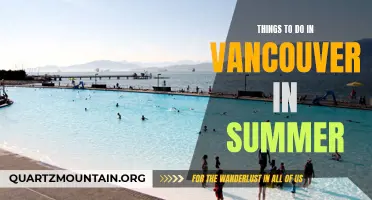
12 Fun Activities to Experience in Vancouver in Summer
- May 14, 2023

14 Fun Things to Do in Lincoln, IL

Understanding the Current Travel Restrictions to the USA: What Travelers Need to Know
- Aug 02, 2023
- See all results

Cosy Hotels in the German Countryside

Sustainable Munich: Discovering the Bavarian Capital with Fresh Eyes!
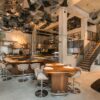
Enjoy Germany with Style
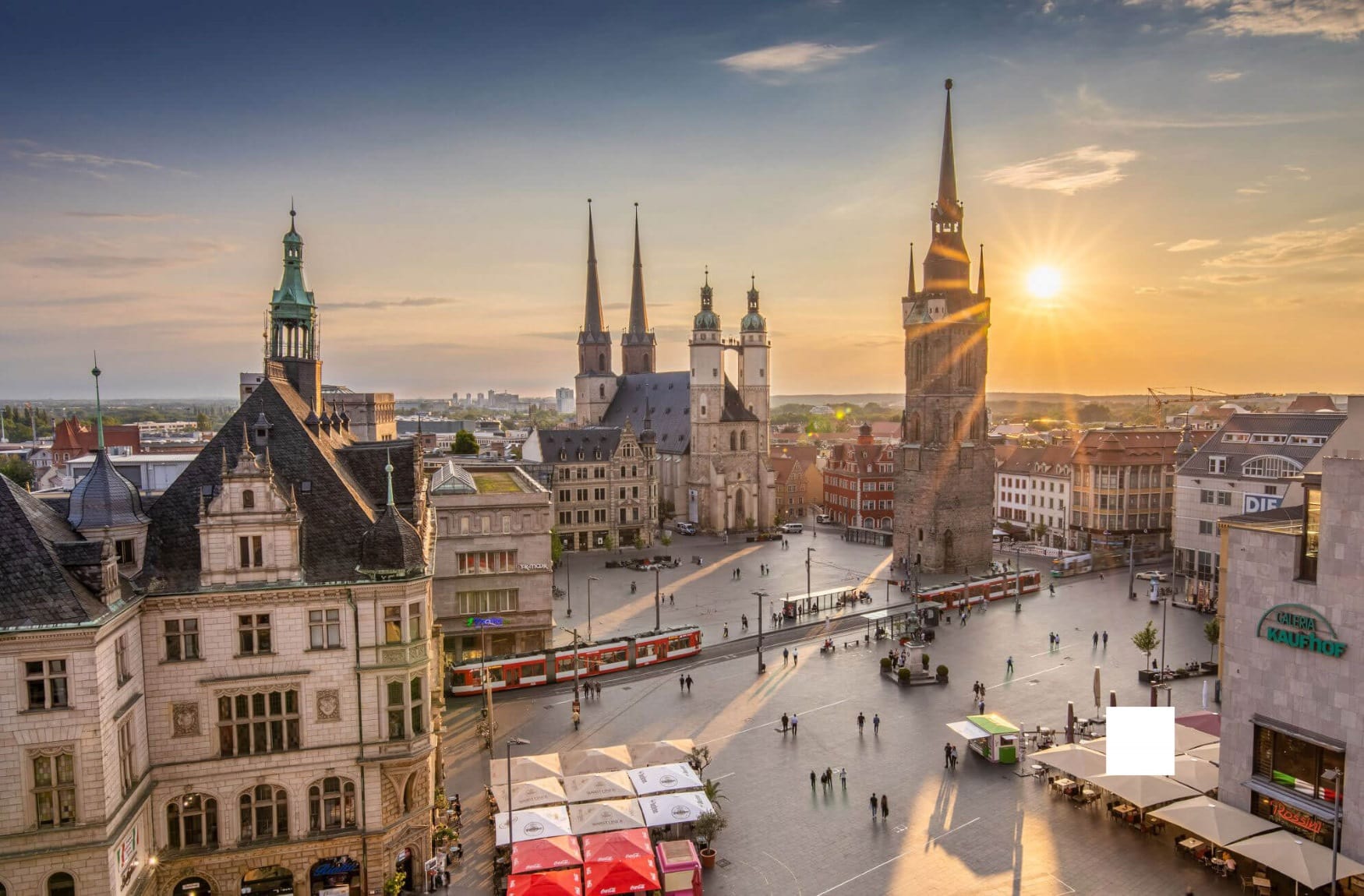
Halle at the Saale – Worth a trip
Picturesquely situated along the Saale River, the largest city in Saxony-Anhalt is just a stone’s throw away from seven UNESCO World Heritage Treasures – and a beauty itself. Welcome to Halle!
Full of Sound
When you hear the “Halle-Lujah” of Europe’s largest carillon, you have arrived in Georg Friedrich Händel’s birthplace . In honor of its greatest son, the Händel Festival has been inviting baroque stars and fans from all over the world to Halle for 100 years. If you prefer something more modern, you can groove at the Women in Jazz festival, for example.
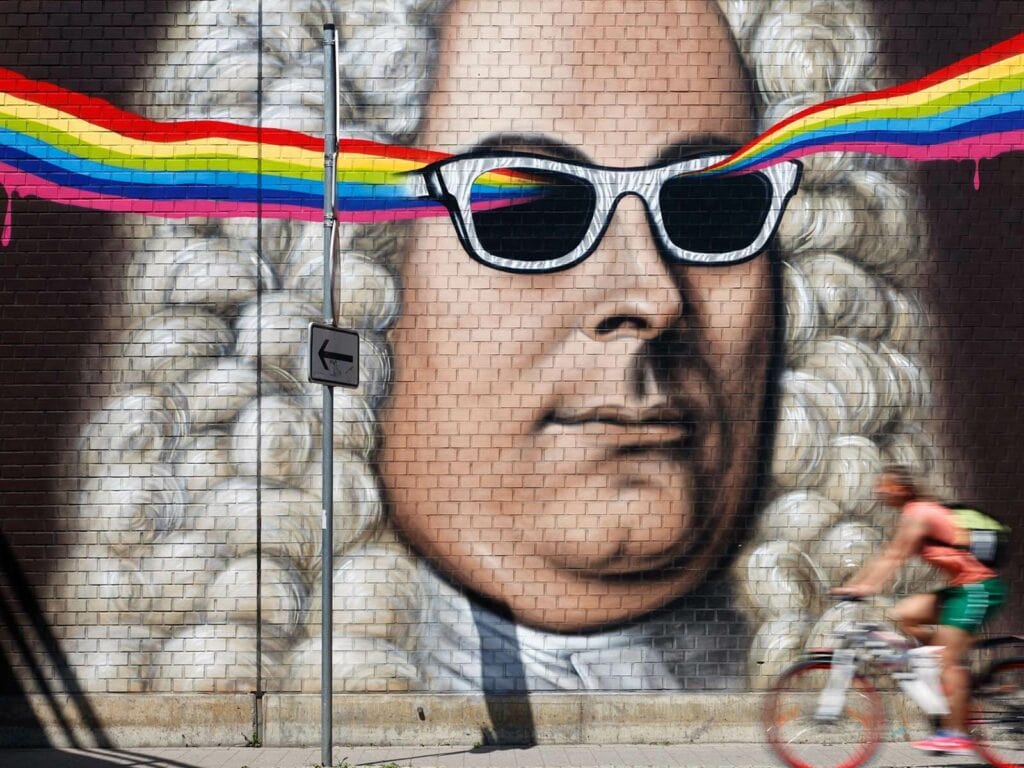
Green, greener, Halle
The Saale is the city’s lifeline, flowing through it’s middle and creating green islands with secluded spots and countless leisure opportunities. No wonder Halle is one of the greenest cities in Germany.

The magical Nebra Sky Disc, a UNESCO “Memory of the World” document, explains the stars in the State Museum of Prehistory , one of the most important archaeological museums in Central Europe. If you want to dive even deeper into the vastness of space, we recommend a visit to the state-of-the-art Halle Planetarium , which just opened in 2023. Even the architecture of the former gasometer is impressive.
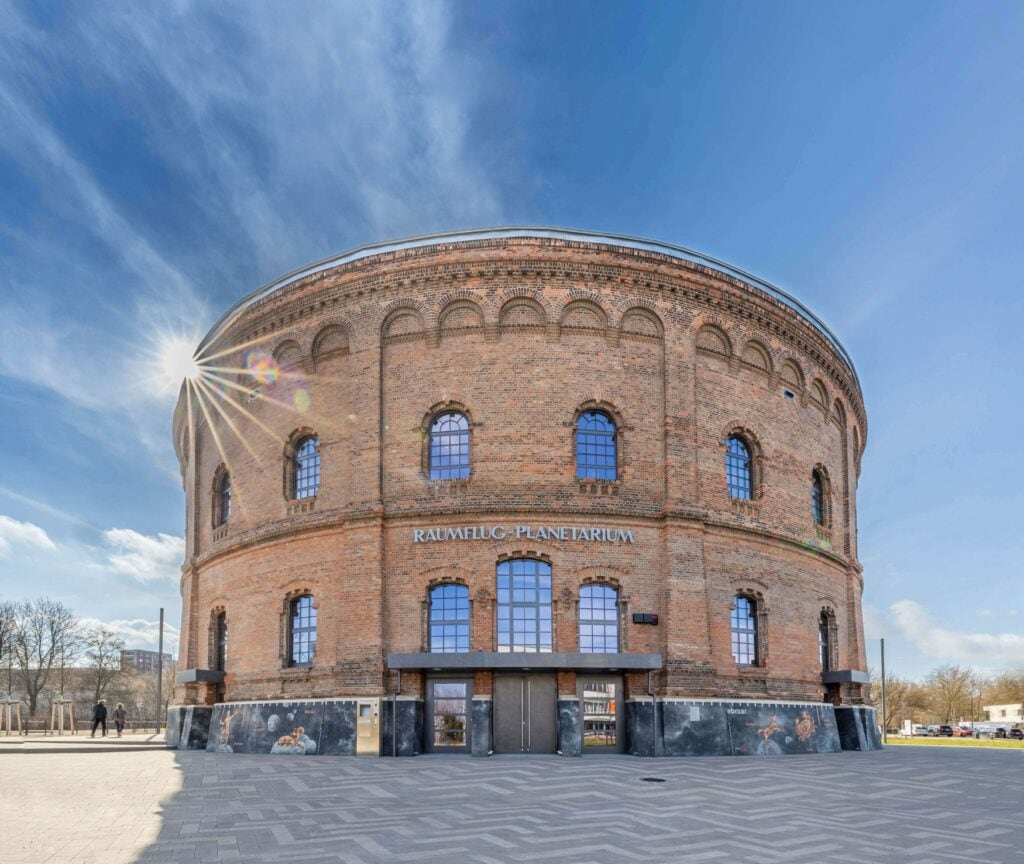
Historical, young, and creative – all at once
In Halle, old meets new, young meets old, vibrant city life meets relaxing on the banks of the Saale. The well-preserved old town tells the story of over 1,200 years of city history, which continues to be written today by almost 245,000 residents, including more than 20,000 students, scientists and creative minds from the arts and culture .
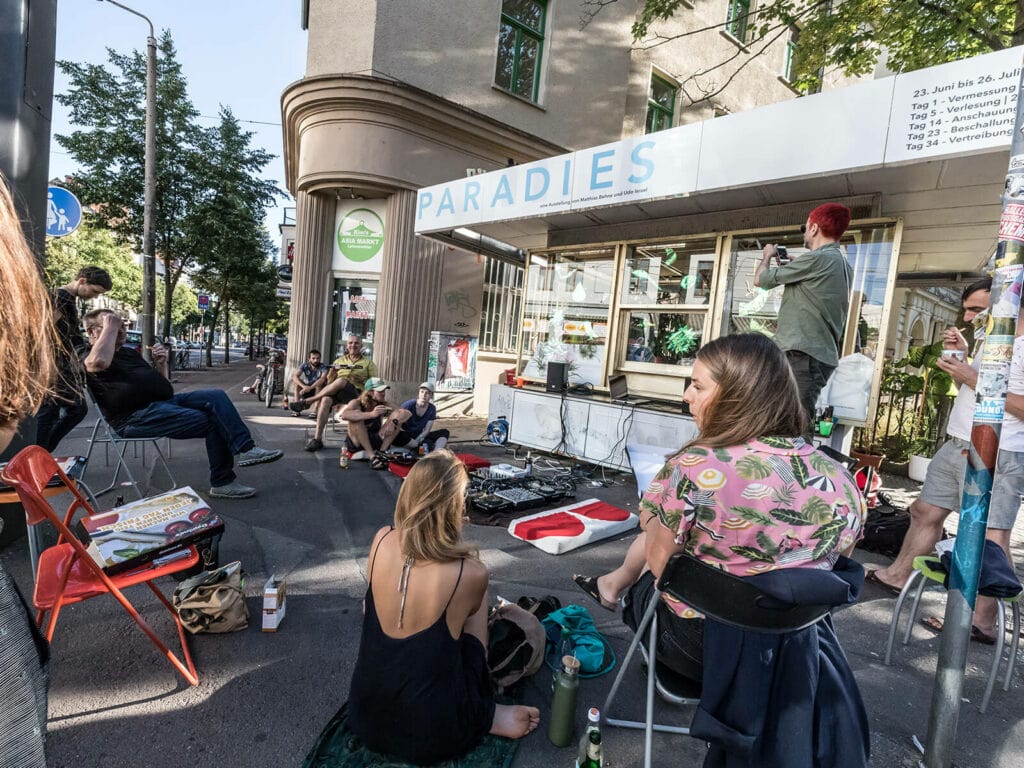
A packed calendar of events invites you to the next exhibition at the Moritzburg Art Museum , a concert at the opera, or a voyage of discovery through the showrooms of the Francke Foundations, home to the world’s largest half-timbered house at over 100 meters in length.
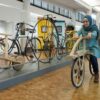
Inventive wealth resides in these German places

Sweet and salty
The city owes its origins to salt. The oldest brotherhood in the world, the “Salzwirker-Brüderschaft im Thale zu Halle”, still boils salt according to ancient tradition. Halle also offers culinary delights with chocolate from Halloren – the oldest chocolate factory in Germany.

Worth a trip
Seven of Germany’s 52 UNESCO World Heritage Sites can be found in and around Halle alone: The Nebra Sky Disc in the Halle State Museum of Prehistory, the majestic Naumburg Cathedral , the idyllic Garden Kingdom of Dessau-Wörlitz , the pioneering Bauhaus in Dessau and Weimar, picturesque Quedlinburg , the world-changing Luther memorials in Eisleben and Wittenberg, and Classical Weimar , shaped by Schiller and Goethe. The unique buildings and treasures are a maximum of 90 minutes away by car or can be easily reached by public transport from the main station.

Plan your visit now !

- Where to stay
- Art & Culture
- Museums & Galleries
- Green & Active
- Food & Drink
- Ideas for kids
- Live & Study
- Conference packages
- Current events
- Supporting programme
- This is why Halle
- City Whisper
- Green Halle
- Finni & Rudi
- Verliebt in Halle
- Nebra Sky Disc
- Tourist Information
- Contact persons
A warm welcome
... to the pulsating heart of the city. Halle is lively, full of obvious and hidden beauty and is waiting to be conquered.
Color title A warm welcome
It’s great that you are here.
Welcome to Halle (Saale). Look forward to a mixture of authentic big city and young art scene, award-winning freethought theatre and original nightlife, creative open spaces and the cosiness of a charming, compact old town. In short: when you visit the city of Handel, you will experience a unique, vibrant atmosphere that will captivate you.
Book accommodation
Holiday destination halle (saale) and region.

Come and visit us!
By bike, boat, train or camper ....
Many roads lead to the river Saale! Thanks to the excellent ICE railway network, you can reach us easily and from anywhere by train. Along the Saale cycle path you can experience the beautiful nature of central Germany. You can also get to us by boat. Decide for yourself. As long as you come to Halle!

Tourist Information Halle with hallesaale*- & Uni-Shop
Marktschlösschen Marktplatz 13 06108 Halle (Saale)
Tel.: +49 (0) 345 122 99 84 Fax: +49 (0) 345 122 79 22 E-mail: [email protected]
Opening hours: May to October Monday to Friday: 09:30 am to 6:00 pm Saturday: 10:00 am to 4:00 pm Sunday: 11:00 am to 3:00 pm closed on public holidays
November to April Monday to Friday: 09:30 am to 6:00 pm Saturday: 10:00 am to 3:00 pm Closed Sundays and public holidays
Certified with the seal ServiceQualität Deutschland Stufe I.

THE 10 BEST Things to Do in Halle (Saale)
Things to do in halle (saale), explore popular experiences, tours in and around halle (saale).

Halle Private Walking Tour with a Professional Guide

Private City Leipzig Tour

Wittenberg Private Walking Tour With A Professional Guide

Leipzig's Communist Past: A Self-Guided Audio Tour

Leipzig Private Walking Tour With A Professional Guide

first electrical carriage in town - guided City Tours - Leipzig

Leipzig Like a Local: Customized Private Tour

Private AR-Ghost Hunt across the old cemetery "Friedenspark"

Leipzig private tour - Half day


Leipzig Highlights Private Walking Tour
Top attractions in halle (saale).
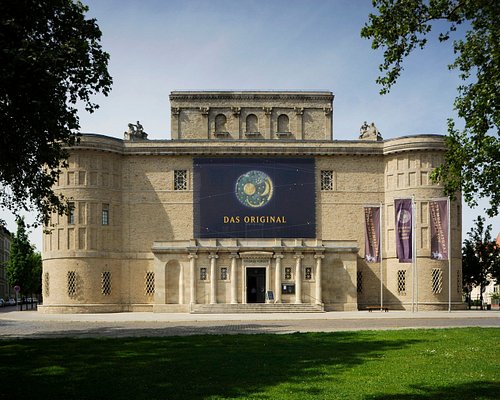
Other Top Attractions around Halle (Saale)

What travellers are saying

- Zoo Halle (Mountain Zoo)
- Landesmuseum fuer Vorgeschichte Halle
- Die Neue Residenz
- Marktkirche Unser Lieben Frauen
- Roter Turm und Hausmanns Türme
- Botanischer Garten
- Ziegelwiese
- Spielplatz "würfelwiese" Neuwerk
- Halloren Schokoladenerlebniswelt
- India Travel
- Czech Republic
- Netherlands
- Oceania Landmarks
- Africa Landmarks
- Landmarks In Australia
- Landmarks in Melbourne
- Landmarks in Sydney
14 Awesome Things to do in Halle – how many you know?
There are great many things to do in Germany , and so are in Halle.
Discover the hidden gems and cultural marvels of Halle, where every street is a brush stroke of history and every corner a canvas of artistic expression.
Without further ado listed below are some of the most fun things to do in Halle:
1. Marktkirche Unser Lieben Frauen
2. franckesche stiftungen zu halle, 3. händel-haus, 4. halloren schokoladenfabrik, 5. giebichenstein castle, 6. saline museum, 7. kunstmuseum moritzburg halle, 8. beatles museum halle, 9. technisches halloren- und salinemuseum, 10. botanischer garten der martin-luther-universität halle-wittenberg, 11. roter turm, 12. st marienkirche, 13. stadtmuseum halle, 14. halle zoo railway.
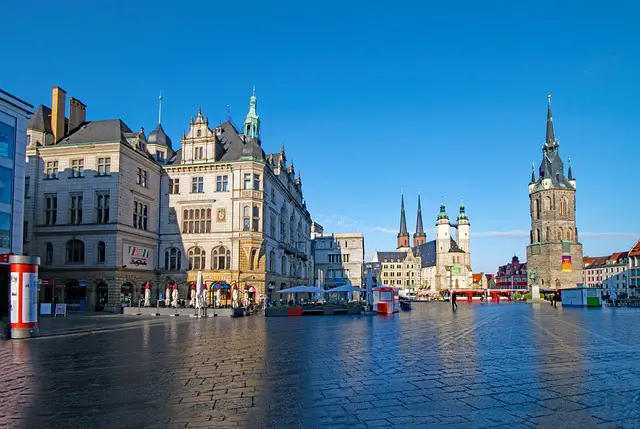
A 16th-century Gothic-style church located in the center of Halle, Germany.
What to see or do: Admire the beautiful architecture of the church, which has survived centuries of wars and conflicts. Take a guided tour to learn more about the history of the church and the city.
Attend a concert or event that is held in the church or climb the tower to enjoy the stunning views of Halle from above.
Don’t miss: The “Himmelsscheibe von Nebra” exhibition, which displays a bronze-age sky disc that is considered to be the oldest depiction of the cosmos in the world.
Insider travel tips: If you want to attend a concert or event at the church, make sure to book your tickets in advance, as they tend to sell out quickly.
Be prepared to climb a lot of stairs if you want to reach the top of the tower, but the views are definitely worth it.
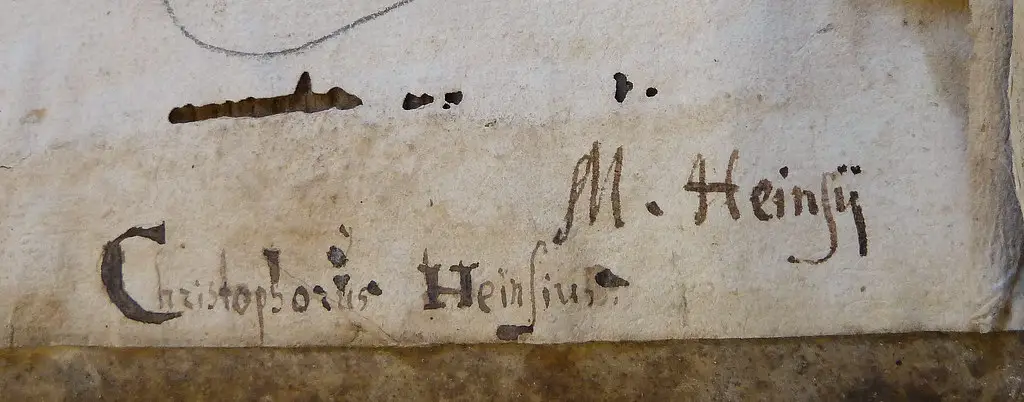
Franckesche Stiftungen zu Halle is a historic complex of buildings founded by August Hermann Francke in 1698.
What to see or do: The Franckesche Stiftungen zu Halle features several museums, exhibitions, and educational institutions.
Visitors can explore the historic buildings, gardens, and courtyards, including the famous Waisenhaus (orphanage) building, which is now a UNESCO World Heritage Site.
Don’t miss: The Museum of Natural History and Ethnography, which houses a vast collection of artifacts from around the world, including mummies, fossils, and minerals.
The Cabinet of Art and Curiosities is also a must-see, featuring a unique collection of paintings, sculpture, and other works of art.
Insider travel tips: Make sure to take a guided tour of the Waisenhaus building to learn about its important history and architecture.
Also, if you’re interested in art and culture, consider attending one of the many concerts, lectures, or exhibitions held at the Franckesche Stiftungen throughout the year.
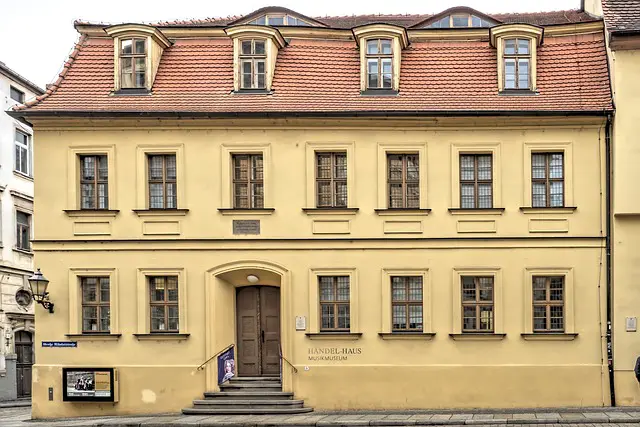
The Händel-Haus is a museum and cultural center dedicated to the life and works of the famous composer Georg Friedrich Händel.
What to see or do: Visitors can explore the beautifully restored 16th-century building where Händel was born, as well as exhibits featuring his manuscripts, personal letters, and musical instruments.
The museum also hosts concerts, lectures, and other cultural events throughout the year.
Don’t miss: Be sure to check out the reconstructed Baroque garden behind the museum, which includes a labyrinth, fountains, and a gazebo. You can also take a guided tour to learn more about Händel’s life and career.
Insider travel tips: – Check the museum’s website to see if there are any special exhibits or events happening during your visit.
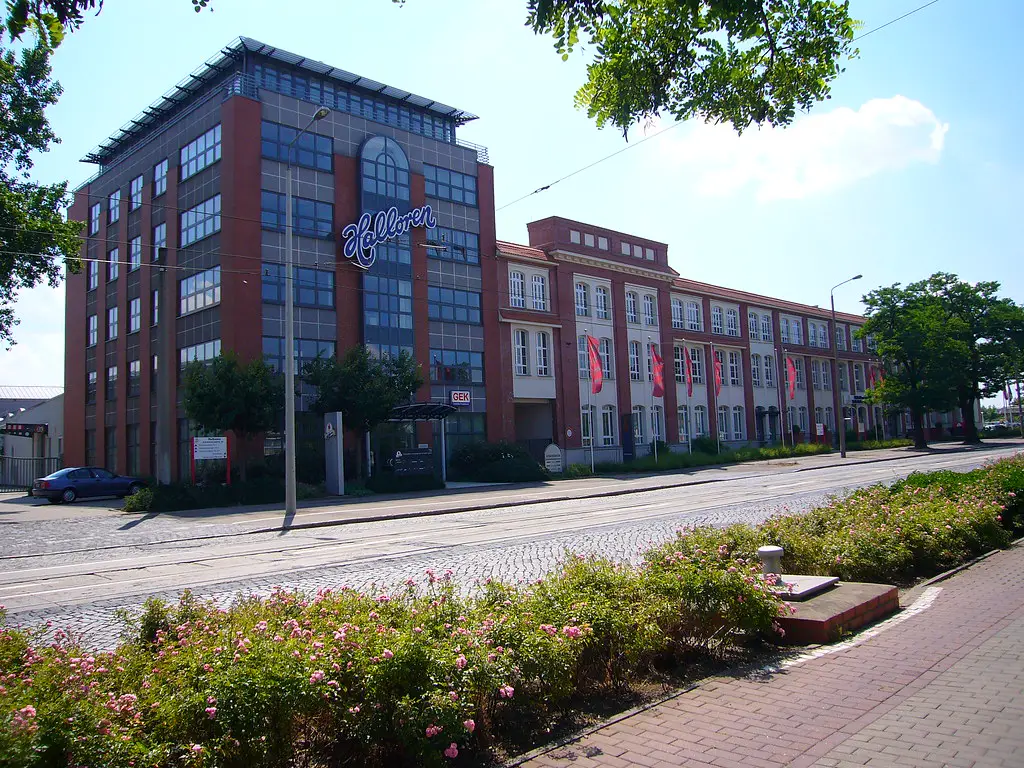
A chocolate factory museum dedicated to the production of Halloren, one of Germany’s oldest chocolate brands.
What to see or do: Take a guided tour to learn about the history and production process of Halloren chocolate. See vintage machinery, watch chocolate being made, and get a hands-on experience in the chocolate workshop.
There is also a chocolate museum and a shop to buy the products.
Don’t miss: Trying the different types of Halloren chocolate, including the famous “Kugeln” (chocolate balls) in flavors like champagne and truffle.
Insider travel tips: Book the guided tour in advance, especially during peak tourist season.
The shop offers great deals on buying chocolates in bulk, so stock up on gifts for friends and family back home.
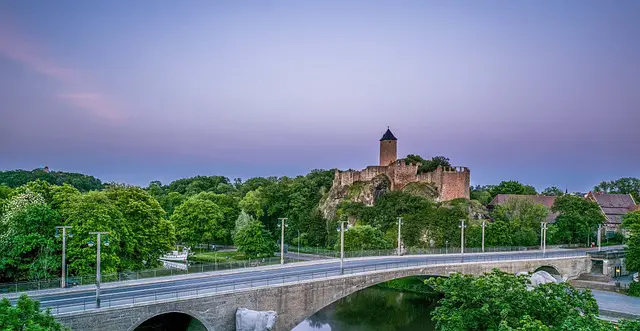
Giebichenstein Castle is a medieval fortress located on a hill above the Saale River in Halle, Germany. It is one of the largest and best-preserved castles in the region.
What to see or do: Visitors can take guided tours of the castle and learn about its history and architecture.
The castle also houses the Kunstmuseum Moritzburg, which has an impressive collection of art from the Middle Ages to the modern era.
The castle grounds offer spectacular views of the surrounding landscape.
Don’t miss: Don’t miss the 40-meter-high tower, which offers amazing panoramic views of Halle and the Saale River. Also, don’t miss the sculpture park outside the museum, which showcases contemporary art.
Insider travel tips: It is recommended to wear comfortable footwear as the climb to the castle can be steep. Visitors can take the bus or tram to get to the foot of the castle hill.
It is also best to visit the castle in good weather to fully appreciate the views.
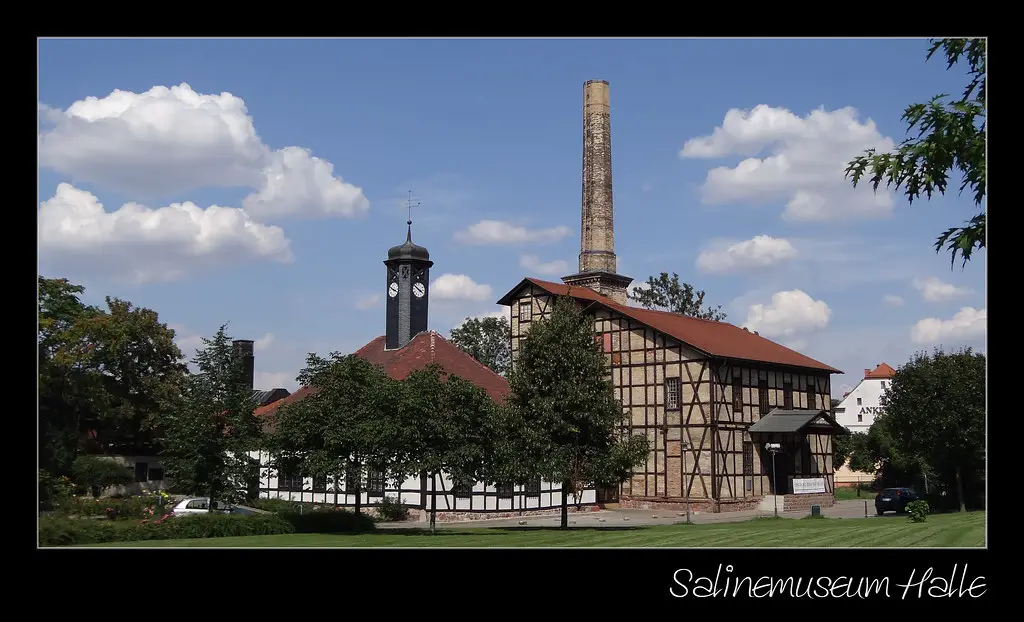
Saline Museum is a unique museum located in the German city of Halle that provides an interesting glimpse of the history of salt production in the region.
What to see or do: Explore the museum’s fascinating collection of exhibits that showcase the history of salt production from the 16th century to modern day.
Marvel at the intricate tools and equipment used in salt mining and learn about the various techniques and processes used to extract salt.
Discover the cultural and economic significance of salt in the region and its impact on the local community.
Don’t miss: Make sure not to miss the opportunity to walk through the tunnels of the former saltworks and experience firsthand the conditions and environment in which laborers once worked.
Also, be sure to check out the restored saltworks and learn about its rich history.
Insider travel tips: If possible, visit the Saline Museum during the annual Salt Festival in Halle, where you can witness reenactments of salt mining techniques and participate in various activities related to salt production.
The museum can be easily reached by public transportation and offers guided tours in both German and English.
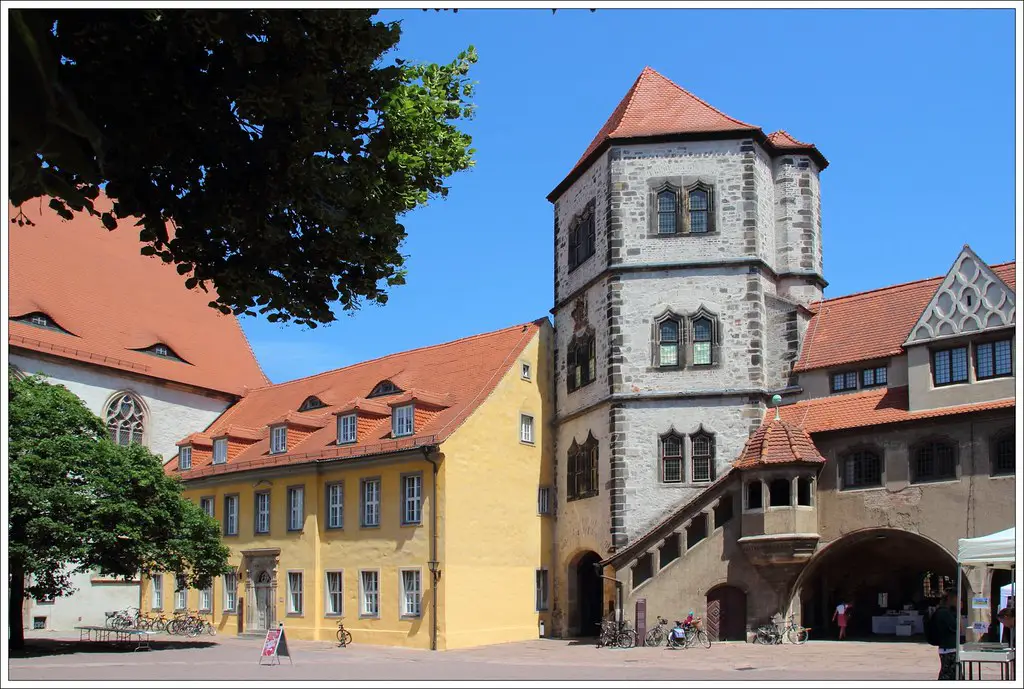
Kunstmuseum Moritzburg Halle is a modern and contemporary art museum located in the city of Halle, Germany.
What to see or do: The museum has an extensive collection of paintings, drawings, and sculptures from the 19th and 20th centuries, including works by famous artists such as Ernst Ludwig Kirchner, Max Beckmann, and Pablo Picasso.
Visitors can also enjoy temporary exhibitions that showcase the latest and most exciting contemporary art.
Don’t miss: One of the most famous works in the museum is the triptych “The Crucifixion” by Max Beckmann, which is considered one of the most powerful depictions of the event in modern art.
Other highlights include Kirchner’s “Street Scene Berlin” and Picasso’s “Woman with a Mandolin.
Insider travel tips: – The museum is closed on Mondays, so plan your visit accordingly.
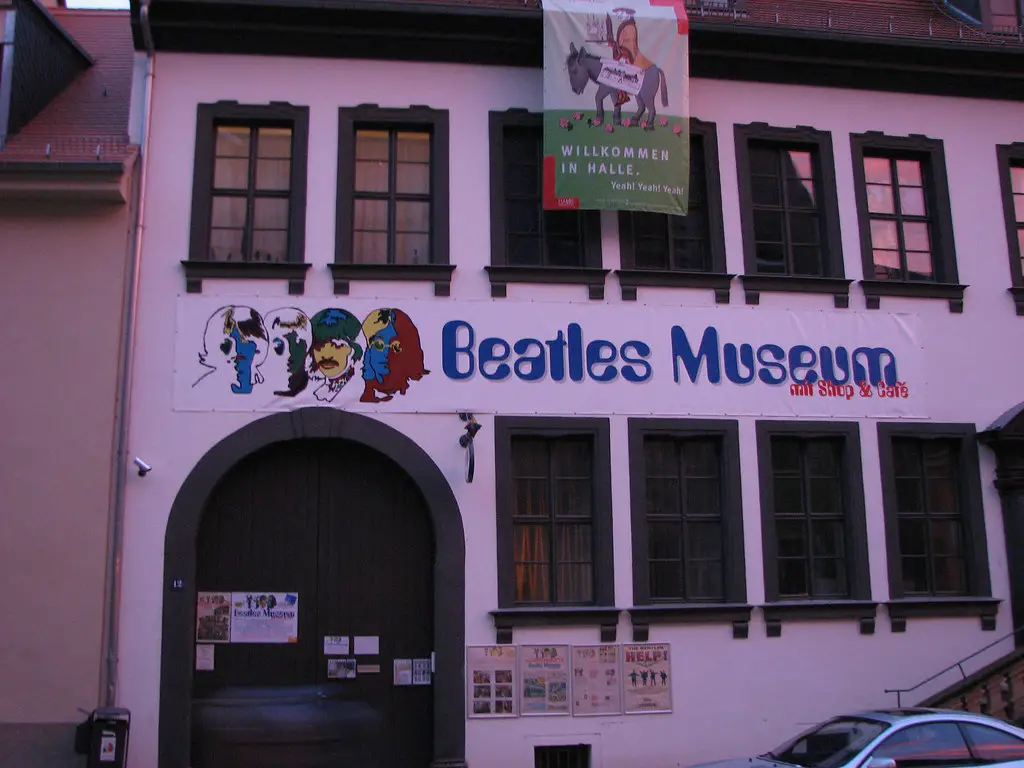
The Beatles Museum Halle is a small museum dedicated to the life and work of the legendary British rock band, The Beatles.
What to see or do: Visitors can explore exhibits that showcase the band’s history, including original concert posters, photographs, instruments, vinyl records, and other memorabilia. The museum also features a replica of the Cavern Club in Liverpool, where The Beatles got their start.
Don’t miss: The highlight of the museum is the collection of rare and one-of-a-kind Beatles items, including a signed copy of their first single, “Love Me Do”, and a lock of John Lennon’s hair.
Insider travel tips: – The museum is located in Halle’s historic district, which is worth exploring on foot.
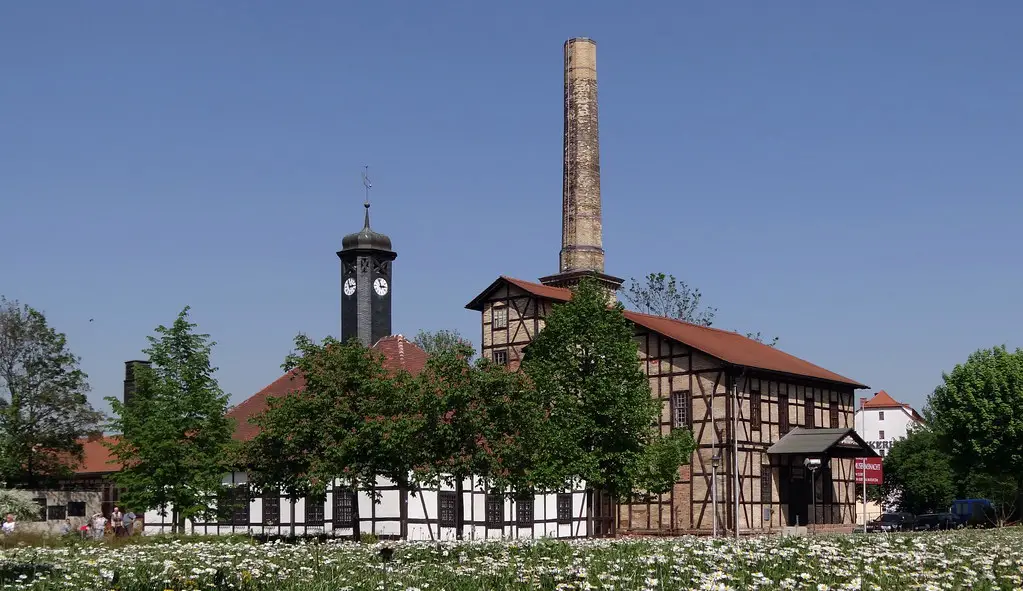
The Technisches Halloren- und Salinemuseum is a museum dedicated to the history of salt and salt mining in the Halle region.
What to see or do: Visitors can take a tour of the museum and learn about the different techniques used to extract salt from the earth.
There are exhibits showcasing the various tools and machinery used in salt mining, as well as photographs and documents from the industry’s history.
Don’t miss: One of the highlights of the museum is the chance to visit the underground salt mine, which is still in operation today.
Visitors can take a guided tour deep into the mine and see firsthand how salt is extracted from the earth.
Insider travel tips: – Wear comfortable shoes as the underground salt mine tour involves a fair amount of walking on uneven terrain.
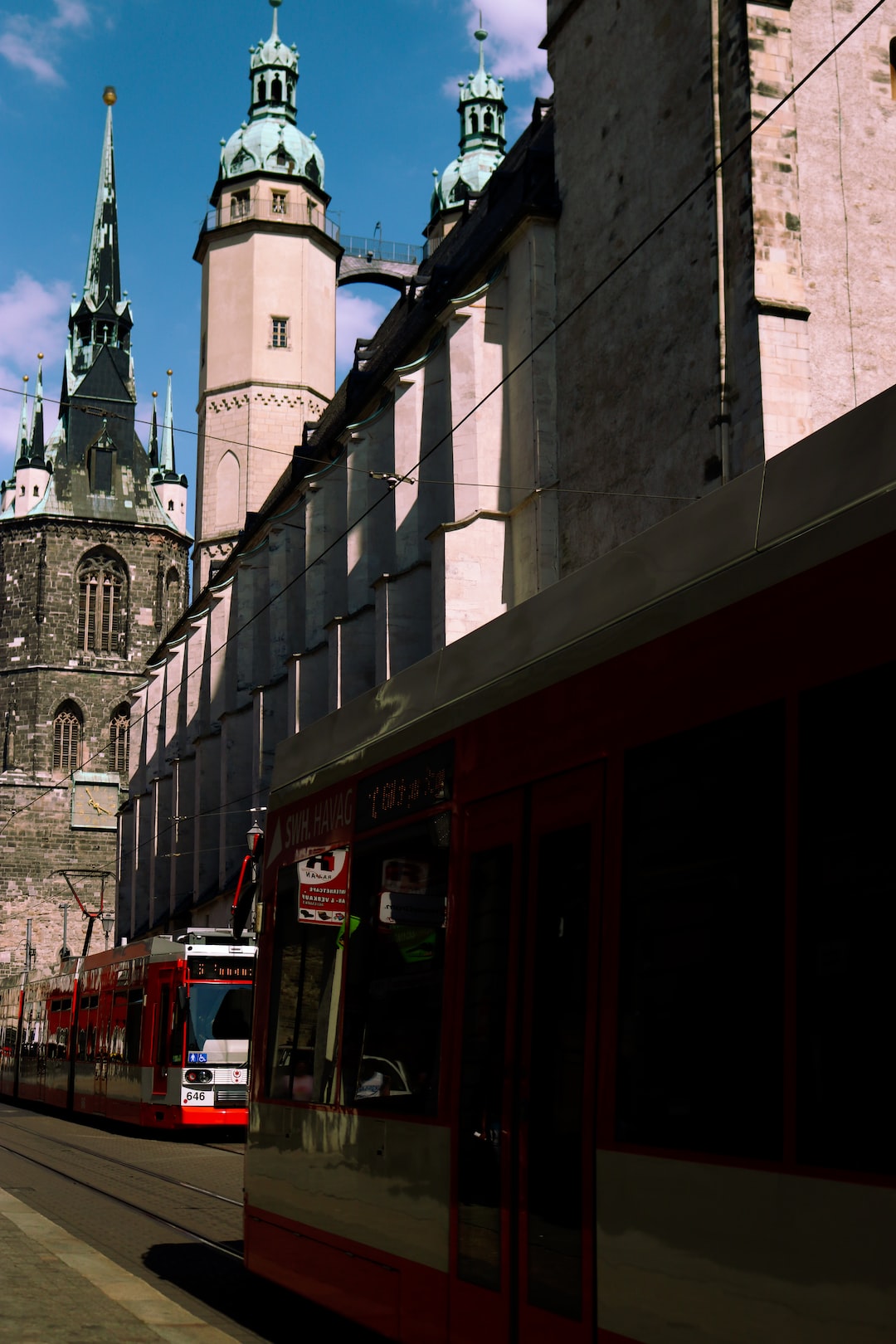
A botanic garden and research institution located in the city of Halle, Germany.
What to see or do: Visitors can explore the garden’s diverse collection of over 10,000 plant species, including a large orchid collection, a Mediterranean house, and a Japanese garden.
Guided tours and workshops are also available.
Don’t miss: The garden’s herbarium, which contains over one million plant specimens, and the tropical butterfly exhibit.
Insider travel tips: Check the garden’s website for information on special events, such as concerts and exhibitions, and plan to arrive early in the day to avoid crowds.
Visitors should also bring comfortable shoes and be prepared to do some walking.
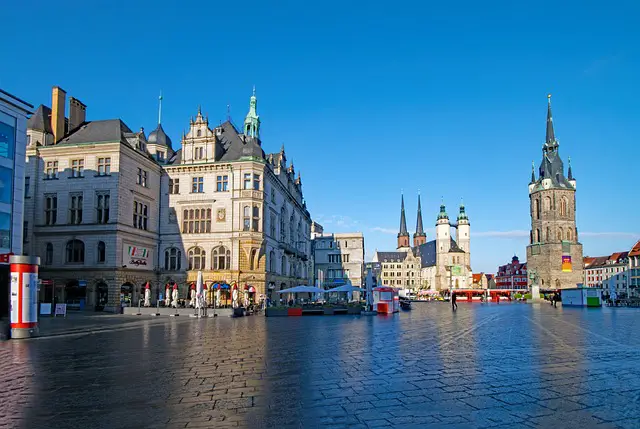
A landmark tower in Halle, Germany.
What to see or do: Climb the 181 steps to the top of the tower for stunning views of Halle and surrounding areas. Marvel at the impressive architecture of the tower, which dates back to the 16th century.
Don’t miss: The carillon chime of 76 bells, which plays a tune every hour from 9am to 9pm.
Also, keep an eye out for the four clock faces, which are adorned with zodiac signs and symbols representing the four seasons.
Insider travel tips: Be prepared for a steep climb to the top, but rest assured, the breathtaking views are worth it. Time your visit to coincide with the hourly carillon chimes for an even more memorable experience.
Additionally, nearby cafes and restaurants offer the perfect spot to relax and soak up the views after your climb.
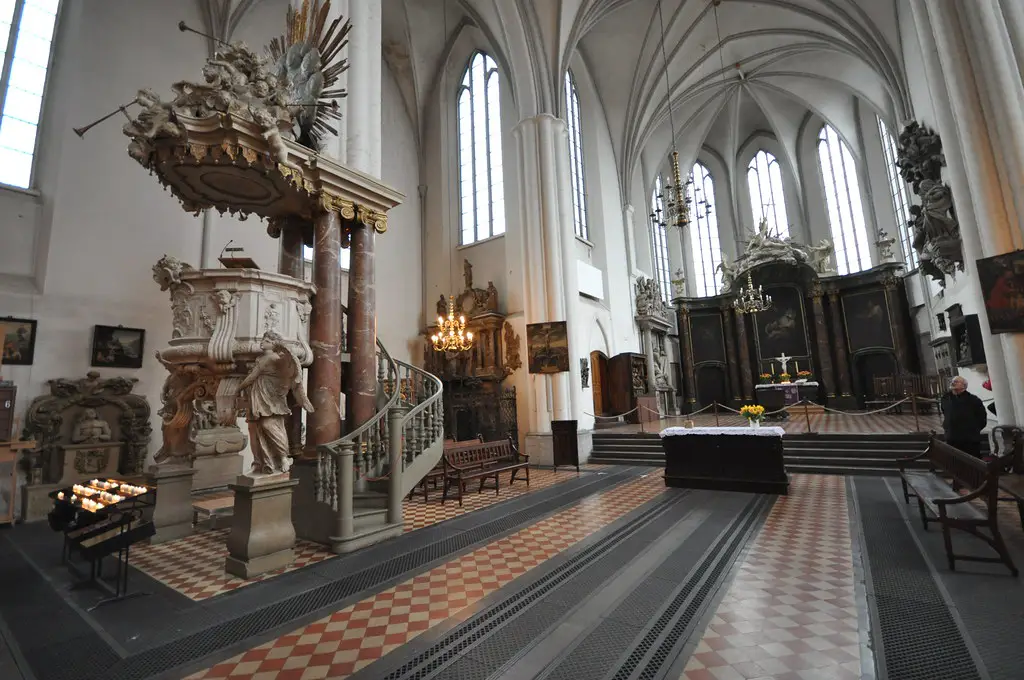
St Marienkirche is a well-known Gothic church located in the city of Halle, Germany. The church dates back to the 16th century and is a beautiful architectural masterpiece.
What to see or do: Visitors to St Marienkirche will be amazed by the towering Gothic architecture and the stunning stained-glass windows. Take a walk around the church grounds and explore the intricately carved statues and detailed stonework.
Don’t miss: Be sure to admire the intricate ornamental details of the church’s impressive altar, which was created by Tilman Riemenschneider.
Also, take some time to see the beautiful rose window, which is one of the most impressive examples of Gothic architecture in the world.
Insider travel tips: Visitors should take the time to learn about the fascinating history of the church and the city of Halle.
The church is open to visitors throughout the day and there are guided tours available for those who want to learn more about the history and significance of the church.
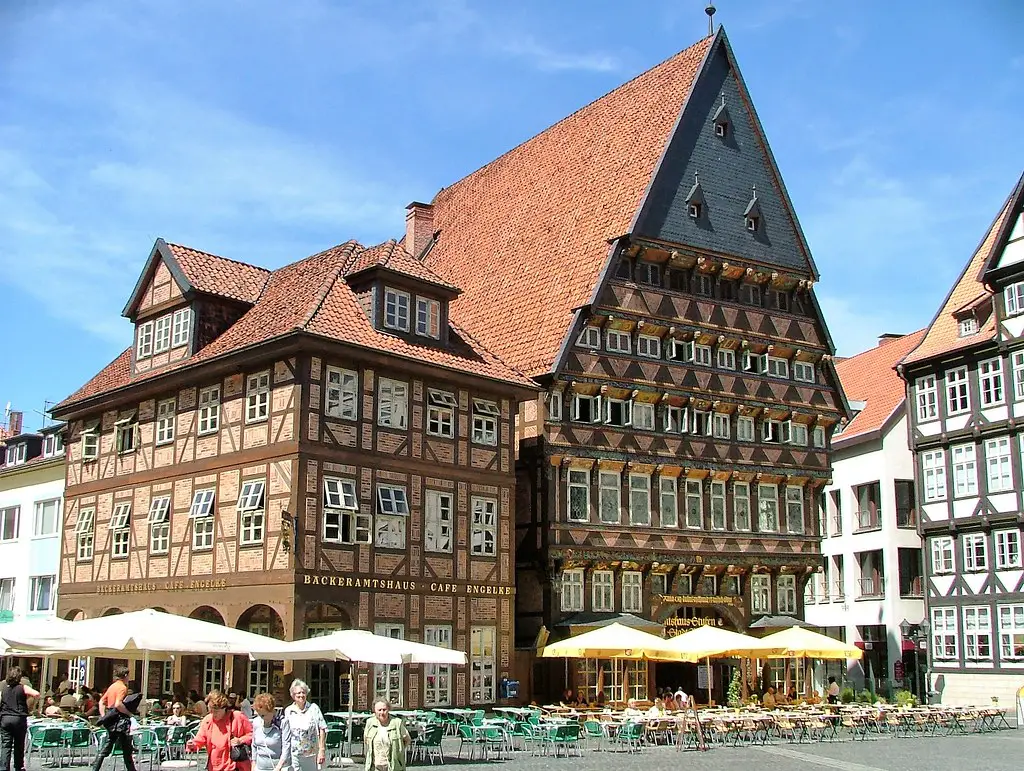
Stadtmuseum Halle is a museum dedicated to the history of the city of Halle, Germany.
What to see or do: The museum offers a comprehensive view of the city’s history through a variety of exhibits, including displays on art and culture, traditional handicrafts, and the development of the local economy.
Visitors can also explore the museum’s collection of artifacts ranging from ancient Roman coins to modern sculptures.
Don’t miss: One of the highlights of the museum is the display on the history of the local salt trade, which was once a major industry in Halle.
Also, be sure to check out the impressive collection of paintings and sculptures by artists from the city and region.
Insider travel tips: The museum is located in the heart of Halle and is easily accessible by public transportation.
It’s a great way to spend a rainy day or to escape the bustle of the city for a few hours.
Give yourself at least 2-3 hours to fully explore all the exhibits.
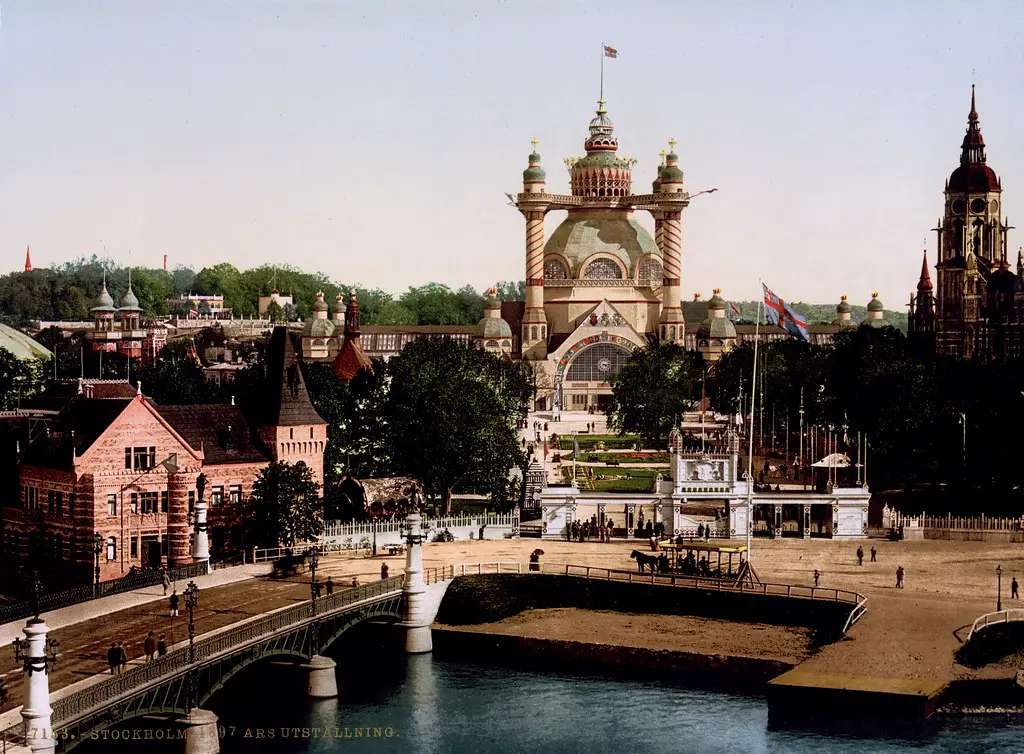
A charming narrow gauge railway in Halle Zoo that takes visitors on a scenic ride through the park.
What to see or do: Enjoy a leisurely 2.5 km train ride around the zoo, stopping at key animal exhibits along the way.
Admire the lush greenery of the park as you journey through the vantage of the open-air carriages.
Don’t miss: Keep an eye out for the fascinating animals residing in Halle Zoo, including rare species such as snow leopards, Komodo dragons and gibbons.
Be sure to capture some great photographs of the animals during the train ride.
Insider travel tips: – The train is typically open from March to November, but closed during winter months.
Join the conversation Cancel reply
Your email address will not be published. Required fields are marked *
Last Updated on July 27, 2023 by Nancy Johnson
Privacy settings
Here you will find an overview of the types of cookies used on the website. You can set your consent for each category individually. Further information can be found in the privacy policy .
- Essential Cookies For the use of the website with all functions (e.g. user settings, watch lists, etc.)
- Statistics Statistics Cookies collect information anonymously. This information helps us to understand how our visitors use our website.
- Marketing In order to provide you with the best possible offer in cooperation with our partners, we use marketing tools. For example, in order to use our chatbot, you must activate this setting.
- External contents Required for viewing external media and third-party content. The provider may set cookies for its part. The respective data protection regulations of the provider apply.
- Inspiring Germany
Cities & Culture
- Nature & Outdoor Activities
- Royal Palaces & Castles
- Experience & Enjoy
- Current highlights
- Sustainable travel
- Barrier-free travel
- Easy language
- Federal states
Handel House Halle
Visit the house in which the famous composer Georg Friedrich Handel was born, where you can now explore the award-winning permanent exhibition called "HANDEL – The European" and admire musical instruments dating back six centuries.
Back in 1948, the city of Halle opened up its music museum in the house in which Georg Friedrich Handel was born. The three main collections and areas of research are a clear indication of what this museum is all about: the life and work of Georg Friedrich Handel, the history of music in the region and a historical collection of musical instruments. The permanent exhibition called "HANDEL – The European" aims to get to grips with the significance of Georg Friedrich Handel within modern society, looking beyond just his music. 14 rooms covering 550 square metres are dedicated to the life and work of the famous Baroque composer who was born in Halle in 1685.
Handel is also brought to life in a miniature Baroque theatre, where an animated Georg Friedrich Handel takes to the stage to play eight of his 40 or so opera productions on the harpsichord. Over the course of the year, a number of concerts are held in the Chamber Music Hall and in the historical wooden parlour that dates back to the 16th century. You can even hear what some of the instruments in the musical instrument exhibition sound like. Opening times: Tuesday to Sunday: 10 am–6 pm
Discover more
Exceptionally green cities: so many parks, such beautiful gardens, from schinkel to foster: fascinating architecture, design museums: a celebration of beauty, metropolises of millions: these cities show true magnitude, this is the taste of germany, cities on the border: rubbing shoulders with european neighbours, explore the surroundings.

1-Day Halle (Saale) Itinerary
Navigate forward to interact with the calendar and select a date. Press the question mark key to get the keyboard shortcuts for changing dates.
Navigate backward to interact with the calendar and select a date. Press the question mark key to get the keyboard shortcuts for changing dates.
- Halle (Saale) in 1 day
- 2-Day Halle (Saale) Itinerary
- 3-Day Halle (Saale) Itinerary
- 4-Day Halle (Saale) Itinerary
- 5-Day Halle (Saale) Itinerary

Table of contents
1-day itinerary, zoologischer garten halle (bergzoo).
State Museum of Prehistory Halle (Saale)

Giebichenstein Castle
Giebichenstein-brücke, where to eat, bergschenke, objekt 5 / restaurant ruine, mextreme restaurant & bar, restaurant alchimistenklause.

Track your travel spending and split costs with friends
Plan your trip. Keep your budget organized. Split the cost between tripmates. Wanderlog does it all.

What's the weather like in Halle (Saale)?
It depends on when you visit! We've compiled data from NASA on what the weather is like in Halle (Saale) for each month of the year: see the links below for more information.
- Weather in Halle (Saale) in January
- Weather in Halle (Saale) in February
- Weather in Halle (Saale) in March
- Weather in Halle (Saale) in April
- Weather in Halle (Saale) in May
- Weather in Halle (Saale) in June
- Weather in Halle (Saale) in July
- Weather in Halle (Saale) in August
- Weather in Halle (Saale) in September
- Weather in Halle (Saale) in October
- Weather in Halle (Saale) in November
- Weather in Halle (Saale) in December
Explore nearby places
- Halle (Saale)
- Bad Lauchstadt
- Bad Durrenberg
- Braunsbedra
- Markranstaedt
- Grossschonau
- Bitterfeld-Wolfen
- Lutherstadt Eisleben
- Weissenfels
- Hartmannsdorf
All related maps of Halle (Saale)
- Map of Halle (Saale)
- Map of Landsberg
- Map of Petersberg
- Map of Bad Lauchstadt
- Map of Merseburg
- Map of Wettin
- Map of Hoehnstedt
- Map of Leuna
- Map of Brehna
- Map of Schkeuditz
- Map of Dederstedt
- Map of Bad Durrenberg
- Map of Braunsbedra
- Map of Delitzsch
- Map of Markranstaedt
- Map of Grossschonau
- Map of Bitterfeld-Wolfen
- Map of Lutzen
- Map of Rackwitz
- Map of Querfurt
- Map of Bitterfeld
- Map of Koethen
- Map of Eisleben
- Map of Lutherstadt Eisleben
- Map of Weissenfels
- Map of Jessnitz
- Map of Karsdorf
- Map of Leipzig
- Map of Peissen
- Map of Goseck
- Map of Hartmannsdorf
Halle (Saale) throughout the year
- Halle (Saale) in January
- Halle (Saale) in February
- Halle (Saale) in March
- Halle (Saale) in April
- Halle (Saale) in May
- Halle (Saale) in June
- Halle (Saale) in July
- Halle (Saale) in August
- Halle (Saale) in September
- Halle (Saale) in October
- Halle (Saale) in November
- Halle (Saale) in December
Looking for other day-by-day itineraries in Halle (Saale)?
Check out our other curated itineraries that are also filled with jam-packed days:
Day itineraries for nearby cities
- 1-Day Leipzig Itinerary

- Itinerary + map in one view
- Live collaboration
- Auto-import hotels and reservations
- Optimize your route
- Offline access on mobile
- See time and distance between all your places
Halle - Discovering Germany
Travel and respect, explore and smile, be curious and kind. have wild trips, travelling to halle.
In this page you can find every information for a holiday in Halle, a pretty good destination in Germany (all info about the whole country here) . We will answer the most important questions: what to visit , when to go , how to get to Halle and what means of transport to use to get around . We will describe typical foods , the costs for tourists and where to find accomodation . We will list also the places to see around Halle , and we will also talk about safety and how each type of traveler can enjoy a trip here. So, if you are travelling through Germany, here's everything to know about Halle for a perfect holiday.
General info for a trip to Halle
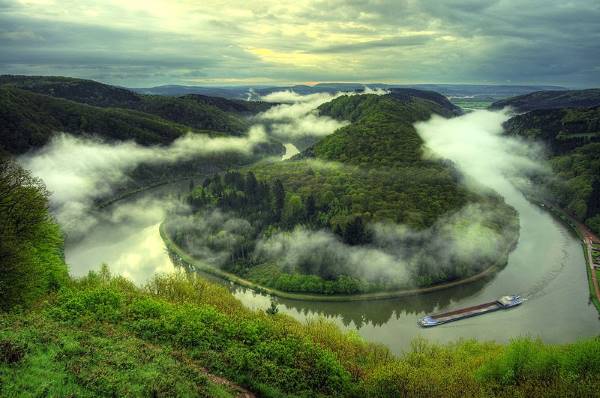
What to visit in Halle
Sure, here are some of the popular tourist attractions in Halle, Germany: 1. Marktkirche Unser Lieben Frauen: It is an impressive medieval Gothic-style church located in the center of Halle. Its construction began in the 16th century and lasted for over a century. The church houses several valuable works of art and is renowned for its impressive stained-glass windows. 2. Halloren Schokoladenfabrik: It is one of the oldest chocolate factories in Germany and a must-visit attraction in Halle. Visitors can learn about the history of chocolate, watch the production process, and sample different chocolate treats. 3. Giebichenstein Castle: Located on a hill overlooking the Saale River, Giebichenstein Castle is a beautiful landmark in Halle. It was built in the 11th century and has been renovated several times since. Today, it houses the Burg Giebichenstein University of Art and Design. 4. Handel-Haus: The Handel-Haus is the birthplace of the famous composer George Frideric Handel. The museum here showcases his life and work, and visitors can see period instruments and manuscripts. 5. Franckesche Stiftungen: This historic complex was founded in the 17th century by August Hermann Francke, who was a religious leader and philanthropist. The site comprises several buildings, including a school, library, and museum. Visitors can take guided tours to learn about the foundation's history and activities. 6. Zoo Halle: The Halle Zoo is a popular attraction for families and animal lovers. It houses more than 2,000 animals from around the world, including lions, tigers, and elephants. 7. Moritzburg Castle: This Renaissance-style castle was built in the 16th century and is located in the center of Halle. It houses an art museum showcasing works by local artists. 8. Saale-Unstrut Wine Region: The Saale-Unstrut region is one of Germany's smallest wine regions and is known for its high-quality wines. Visitors can take guided tours of local wineries and vineyards, sampling the wines and learning about the production process. All of these attractions are great places to visit and I hope they are helpful in planning your trip to Halle! In this website, you can find many other destinations to visit in Germany, so you can have a look in the "USEFUL LINKS" sections in this page for other places that could inspire your trip.
When to go on holiday to Halle
The best time to go on holiday to Halle (Germany) depends on your preferences. The summer months, from June to August, are the warmest with temperatures ranging from 18 to 23 °C (64 to 73 °F), making it suitable for outdoor activities. However, this period is also the peak tourist season, and it can be crowded and more expensive. If you prefer fewer crowds and mild weather, the spring and fall months (March to May and September to November) are also good options. During these periods, temperatures range from 10 to 17 °C (50 to 63 °F), and you can catch the beautiful autumn colors or blooming flowers. Finally, if you enjoy winter sports and activities, you can visit during the winter months from December to February, where temperatures can drop to below freezing, and you may experience snow and ice. You can book here visit and activities to do during your holiday !
How to get to Halle
There are several ways to get to Halle (Saale), Germany, depending on where you are coming from. Here are some options: 1. By air: The closest airports to Halle are Leipzig/Halle Airport (LEJ) and Berlin Brandenburg Airport (BER) which are both approximately 1 hour away from Halle. From there, you can take a train or bus to Halle. 2. By train: Halle has a central train station that is well-connected to other German cities and European destinations. You can easily find connections from major cities such as Berlin, Frankfurt, or Munich. 3. By car: Halle is located on the main A9 highway between Berlin and Munich, making it easily accessible by car. You can rent a car from any major car rental company or use a ride-sharing service such as Uber or BlaBlaCar. 4. By bus: There are several bus companies that offer connections to Halle from other German cities and European destinations. Flixbus is a popular option. I hope this helps you get started planning your trip to Halle! To find the most convenient flights, compare (and book if you like!) the best offers here on Skyscanner . To hire a car to visit Halle, I recommend to check this: COMPARE HERE ALL OFFERS FOR CAR RENTAL
Typical foods in Halle
Halle is a beautiful city located in the Saxony-Anhalt region of Germany and renowned for its rich culinary culture. Here are some typical foods of Halle: 1. Halloren Kugeln: These are delicious chocolates found in the city of Halle. They come in a variety of flavors, including milk chocolate, dark chocolate, and praline, and are quite popular among tourists. 2. Asparagus: Halle is known for producing high-quality white asparagus, which is a popular vegetable during the spring season. In Halle, you can find it served in a variety of dishes, including with potatoes, ham, and hollandaise sauce. 3. Quarkkeulchen: This local dessert is a fried pancake made with quark cheese, flour, and eggs. It's often served with applesauce, and is popular during the winter season. 4. Leberwurst: This is a German sausage made from liver, pork, and spices. Halle is known for producing some of the best Leberwurst in the country, and it's often served on bread as a snack or breakfast food. 5. Harzer Käse: This is a pungent, strong-flavored cheese produced in the Harz Mountains near Halle. It's made from skimmed milk and is often served with onions and bread. 6. Saale-Unstrut Wine: Halle is a part of the Saale-Unstrut wine-growing region, which produces some of the best wines in Germany. You can enjoy a glass of these delicious wines when you visit the city. You can find general info about typical foods in Germany here .
Is Halle an expensive destination for tourists?
Compared to more popular tourist destinations in Germany, Halle can be considered an affordable option. However, it ultimately depends on individual preferences and budgets. There are a variety of accommodation options available in Halle, ranging from budget hostels to luxury hotels. Dining out and entertainment options can also vary in cost, but there are plenty of affordable options available as well. Overall, Halle offers reasonable prices for a pleasant travel experience.
Where to find accomodation in Halle
Is halle a safe destination for tourists.
Halle (Germany) is considered a safe place for tourists, with a low crime rate compared to other cities. However, like any other city, it's still important to take precautions to ensure your safety. As a tourist, you should stay aware of your surroundings, avoid displaying valuables, and always follow basic safety measures. Additionally, it's always a good idea to research the specific areas you plan to visit and stay up to date on any potential safety concerns. Overall, with common sense and reasonable precautions, travelers should have a safe and enjoyable experience in Halle. You can find general info about safety for tourists in Germany here . Always check updated government info about travelers's safety on the ufficial Foreign Affairs website of your government, before visiting Halle.
What type of travelers will enjoy Halle the most?
Halle, Germany has attractions that can appeal to people of all ages and interests, but it is particularly well-suited for culture and history enthusiasts. Its charming old town has plenty of historic buildings, museums, and galleries that will appeal to travelers interested in exploring the city's rich cultural heritage. Moreover, the city also offers some unique attractions, such as the Handel Festival, where you can enjoy the music of the famous composer, who was born in Halle, and art galleries and exhibitions, which are perfect for families. Couples looking for a romantic getaway can explore the city's narrow alleys and enjoy a boat ride on the Saale river. Additionally, young people looking for fun can find plenty of trendy bars, cafes, and nightclubs in the city center. In summary, Halle, Germany is a versatile destination that can offer memorable experiences to different types of travelers, provided they are interested in art, history, culture and music.
How to get around Halle
In Halle (Germany), you can move around using different modes of transportation. The most common include trams, buses, and taxis. The tram network in Halle is quite extensive, covering most of the city center and suburbs. Buses are also an option, especially if you need to go to areas not covered by the tram system. Taxis are widely available as well but can be more expensive than other modes of transportation. Additionally, biking and walking are great options for exploring the city, and many areas have bike lanes or are pedestrian-friendly.
What to see around Halle
Sure, here are some great places to visit in a day trip from Halle: 1. Leipzig: This is a vibrant, historic city known for its music, art, and culture. Visit the Bach Museum or wander through the historic city center. 2. Wittenberg: A city famous for its ties to the Protestant Reformation and for being the birthplace of Martin Luther. Visit the Luther House and the Castle Church where Luther posted his 95 theses. 3. Berlin: This city needs no introduction, known for its rich history, culture, and art. Visit the Berlin Wall, the Brandenburg Gate, and the famous museums on Museum Island. 4. Dessau: A UNESCO World Heritage Site, Dessau is known for its Bauhaus architecture. Visit the Masters' Houses, the Dessau-Wörlitz Garden Realm, or the Bauhaus Museum for an immersive experience. 5. Quedlinburg: A charming medieval town with well-preserved timber-framed houses, Quedlinburg is the perfect place for a day trip. Visit the castle, the cathedral, and the half-timbered houses for a glimpse into historic Germany. I hope this helps! For every travel information about Germany you can click here . Wild Trips is the Wikipedia of travel: in the unfortunate case you find an error, please write to us to correct it... Thank you! Follow us on Facebook if you like wild trips around the world and beautiful itineraries in Italy: https://www.facebook.com/wildtrips .

USEFUL LINKS
Here you can find a list of destinations in Germany , each with a link to the page with detailed description about what to see and what to do: Berlin: what to see and do Munich: what to see and do Hamburg: what to see and do Cologne: what to see and do Frankfurt: what to see and do Dresda: what to see and do Heidelberg: what to see and do Rothenburg ob der Tauber: what to see and do Lipsia: what to see and do Nuremberg: what to see and do Regensburg: what to see and do Würzburg: what to see and do Weimar: what to see and do Quedlinburg: what to see and do Düsseldorf: what to see and do Brema: what to see and do Rostock: what to see and do Stuttgart: what to see and do Hannover: what to see and do Essen: what to see and do Kassel: what to see and do Bremerhaven: what to see and do Magdeburg: what to see and do Baden-Baden: what to see and do Bamberga: what to see and do Augsburg: what to see and do Wiesbaden: what to see and do Heidelberg-Neuenheim: what to see and do Erfurt: what to see and do Oldenburg: what to see and do Mainz: what to see and do Magonza-Kastel: what to see and do Garmisch-Partenkirchen: what to see and do Coburgo: what to see and do Wolfsburg: what to see and do Wiesbaden-Biebrich: what to see and do Oberhausen: what to see and do Spremberg: what to see and do Hannover-Linden: what to see and do Halle: what to see and do Schwerin: what to see and do Hildesheim: what to see and do Dessau-Roßlau: what to see and do Kiel: what to see and do
Contact [email protected] for any queries on a travel itinerary, advices about a trip report or to organize sailing holidays in Italy. Site Map - Privacy
Visit the Gothic Marktkirche with Handel and Bach Organs in Halle
The late Gothic Marktkirche Unser Lieben Frauen in Halle has organs familiar to Handel and Bach, art by Cranach, and four towers from two previous churches.

The Marktkirche Unser Lieben Frauen (Market Church of Our Dear Lady), or the Marienkirche (St Mary’s), in Halle an der Saale is a late Gothic hall church built mostly between 1529 and 1554. The original idea was to impress the locals with its Roman Catholic magnificence but the city turned Lutheran before its completion and the powerful archbishop had to leave town. Today it is known for its four towers — all from previous churches — and its sober late Gothic interior. Bach would recognize the organ case while the organ on which Handel took his first lessons is still played.
Marktkirche Unser Lieben Frauen in Halle

The building history of Halle’s largest church is noteworthy. Cardinal Albrecht von Brandenburg (1490-1545), the Archbishop of Magdeburg and simultaneously also the Archbishop and prince elector of Mainz, wanted a new monumental church for his residence city Halle. The church should reflect his prestige — as elector of Mainz he was also ex officio the arch-chancellor of the Holy Roman Empire, chaired the electoral college, and was primate of Germany — but it should also have combated the Protestant Reformation started by Martin Luther nearby around a decade earlier.
As there was no suitable space left over for a large church in the center of Halle, two earlier churches were demolished during the construction of the new Marktkirche. However, the western towers of both churches were largely preserved with the new nave built in the large space between the two sets of towers.
The church was damaged during the Second World War in aerial raids and from artillery fire but restored soon after. A larger restoration project was needed after a water heating pipe burst in 1967. It was one of the largest memorial restoration projects in the German Democratic Republic’s history.
Exterior of the Marktkirche

As is often the case with hall churches, the exterior is not particularly interesting, especially as no special western facade was added. The most memorable aspect of the church seen from the outside is the four towers, which together with the nearby Rotes Turm form the five-tower profile that is emblematic of Halle.
The square gothic western towers, or the Blue Towers, are Gothic from the 14th and 15th centuries. The red-brick upper levels and pointy roofs were added between 1507 and 1513.
The origins of the eastern towers are Romanesque and dates from 1230. The Renaissance canopies were added in 1551. These towers are known as the Hausmanntürme (Watchmen’s Towers), as a watchman permanently lived in one of the towers. An open bridge links these two towers at a height of around 40 m. It is now used for trumpet concerts but originally served as a viewing point for the guard. He mostly had to warn in case of fire or other dangers.
The watchman’s house and the bridge are shown on guided tours — enquire at the tourist information office.
On the north side is a memorial for Marin Luther. He preached in the church three times during the last two years of his life. A wax death mask was made when his body was kept overnight in the church on 19 February 1546 when transported from Eisleben, where he died, en route to Wittenberg, where he was buried. This mask is shown in a small Luther Museum inside the church.
Interior of the Marktkirche in Halle

The interior of the Marktkirche is a masterpiece by Caspar Krafft and completed after his death in 1540 by Nickel Hoffmann. By keeping the existing towers, the nave was restricted to a width of only 24 m but a good 88 m long.
Kraft used a triple nave layout with a wide central nave and two narrower side aisles. All have the same height. Ten slender octagonal pillars carry the roof with intricate vaulting.
Construction was halted between 1539 and 1542 — during these years Halle adopted the Reformation officially and Cardinal Albrecht left the city permanently. During the second building period, the church was thus completed as an example of early Protestant church architecture with the emphasis on preaching the sermon. The church was without statues and had no need for a choir.
Hoffmann added the matroneum while further balconies were added in the late 17th century. The wood paneling and seats are from 1561 by the Flemish Renaissance artist Atonius Pauwart.
Handel and Bach Organs in the Marktkirche in Halle

The Marktkirche has two organs. The older, on the east side, is the small Reichel-Orgel from 1664. Georg Friedrich Händel (1685-1759) was baptized in this church and received his first organ lessons on this organ long before he found fame in London as George Frederic Handel. His statue on the market square facing the Marktkirche was added in 1883 in preparation for the celebration of his two hundredth century anniversary. (Halle hosts a major Handel Festival each early June.)
The Reichel organ has only six stops (registers) and is played via a single manual. It is tuned to the cornet tone, which makes it great for reproducing the sound known to 17th-century composers but unable to play together with other modern instruments.

The latter is no real problem in the Marktkirche, as the 4170 pipes of the Schuke organ in the west side of the church are from a modern instrument. This main organ has 56 stops and is played on three manuals and a set of pedals. The largest pipe stands a stately 5 m tall while the smallest measures only 6 mm.
Johann Sebastian Bach (1685-1750) never played this organ, as it was installed in 1984, but he would recognize the historic organ case of Christoph Cuntzius. In 1713, Bach visited Halle to advise on the renovation of the organ, and although he turned down the job of organist that they had offered him, he visited again 1716 to do the final testing of the new instrument and to play at its inauguration. The organ case was originally made for this organ, although at the time it was still unpainted.
Wilhelm Friedemann Bach (1710-1784), a son of JS, worked as organist here from 1746 to 1764.
The largest organ played by JS Bach that is still in use is the Hildebrandt-Orgel in the Stadtkirche St Wenzel in Naumburg — around half an hour south of Halle.
Art in the Marktkirche in Halle

As a Lutheran church from before it was actually completed, the Marktkirche has only a limited number of art works inside. The main works, in addition to the two organ cases, are the altar, a large painting, the baptismal font, and the pulpit with its flamboyant sound board.
The wing altar of 1529 was probably designed by Lucas Cranach the Elder but was painted by his pupil Simon Franck. It can be shown in three versions:
- Central painting with its sponsor Cardinal Albrecht praying in front of the Virgin with Child, side paintings of St Mauritius and St Alexander.
- From left: Mary Magdalene, John the Evangelist, Augustine from Hippo, Catharine of Alexandria.
- Central painting of the annunciation, left Ursula from Cologne, right Erasmus from Antioch.
On the predella is Mary with Child surrounded by the 14 Holy Helpers .

Although the Lutheran church does not venerate Mary in a similar fashion to the Roman Catholic Church, and does not believe in the special role of saints, many Lutheran churches keep (and display) art of saints, and the names, if of historical origin. Many a Lutheran Marienkirche is without a statue or painting of Mary inside. This altar was long kept inside the sacristy but returned to the eastern side of the nave during the restoration completed in 1984. (The officially atheist communist regime probably had more concert venue than religion in mind when restoring this church.)
The huge mannerist painting (1593) above the altar is by the Leipzig artist Heinrich Lichtenfelser. It shows events from the lives of the apostles.
The pulpit ( Kanzel ) is the original by Nickel Hoffmann (1547). The flamboyant eight-pointed-star soundboard ( Schalldeckel ) was carved from lime wood by Heinrich Heidereitter in 1596 and painted by Lichtenfelser.
The oldest decorative item in the church is the bronze baptismal font. It was cast in 1430 in Magdeburg and was presumably used in one of the churches destroyed in the building of the Marktkirche.
Marktkirche Halle Visitors Information

The Marktkirche Unser Lieben Frauen in Halle is open for tourist visits:
January & February:
- Monday to Saturday from 11:30 to 16:00
- Sunday from 15:00 to 16:00
March to December
- Monday to Saturday from 10:00 to 17:00
- Sunday from 15:00 to 17:00
Admission is free.
Guided tours of the tower watchman’s home and the bridge between the two Hausmannstürme are offered by the Tourist Information Office , across the street from the church. It is 220 steps to the 40 m high bridge. Group size is limited to 9 people so enquire (and book) in advance. An alternative is climbing the Roter Turm on the Marktplatz to a similar height.
The Marktkirche is often used for concerts and the organs are frequently played too.
Regular, free half-hour organ concerts are usually:
- March to December: Tuesday at 16:00 and Thursday at noon
- June to September: Saturday at noon
See Marktkirchenmusik for the current program.
Transportation to the Marktkirche

The Marktkirche Unser Lieben Frauen , An der Marienkirche 2, 06108 Halle (Saale), is in the center of the city next to the busy market square. Almost all trams stop here at stop “Marktplatz”, including tram 7 that may be taken to the Landesmuseum für Vorgeschichte (State Museum of Prehistory) that is home to the Sky Disc of Nebra .
It is possible to take trams 1, 2, 3, 4, 5, 7, 10 from the train station to the Marktplatz — otherwise, it is a 20-minute walk.
Halle is a pleasant city with well-rated hotels on Tripadvisor often far cheaper than other larger cities in Germany making it a great option for spending the night before continuing to other destinations. By train, Halle (Saale) Hbf can be reached in around half an hour from Leipzig or Naumburg , and in just over an hour from Berlin on direct trains.
If using only local trains in the region, the Saxony-Anhalt Ticket is a great savings option. This Länderticket covers local train and bus transportation in all of Saxony-Anhalt, Saxony, and Thuringia, and has the same validity and price as the Sachsen or Thuringia Tickets .
More photos on Flickr .

About the author:
Henk Bekker
Henk Bekker is a freelance travel writer with over 20 years of experience writing online. He is particularly interested in history, art, and culture. He has lived most of his adult life in Germany, Switzerland, and Denmark. In addition to European-Traveler.com , he also owns a travel website on the Lake Geneva region of Switzerland and maintains statistical websites on car sales and classic car auction prices . Henk holds an MBA from Edinburgh Business School and an MSc in Development Finance from the University of London.

Home » Germany » Visit the Gothic Marktkirche with Handel and Bach Organs in Halle
To provide the best experiences, we and our partners use technologies like cookies to store and/or access device information. Consenting to these technologies will allow us and our partners to process personal data such as browsing behavior or unique IDs on this site and show (non-) personalized ads. Not consenting or withdrawing consent, may adversely affect certain features and functions.
Click below to consent to the above or make granular choices. Your choices will be applied to this site only. You can change your settings at any time, including withdrawing your consent, by using the toggles on the Cookie Policy, or by clicking on the manage consent button at the bottom of the screen.
Top Things to Do in Halle (Saale), Germany - Halle (Saale) Must-See Attractions
Things to do in halle (saale), explore popular experiences, tours in and around halle (saale).

Halle Private Walking Tour with a Professional Guide

Private City Leipzig Tour

Wittenberg Private Walking Tour With A Professional Guide

Leipzig's Communist Past: A Self-Guided Audio Tour

Leipzig Private Walking Tour With A Professional Guide

first electrical carriage in town - guided City Tours - Leipzig

Leipzig Like a Local: Customized Private Tour

Private AR-Ghost Hunt across the old cemetery "Friedenspark"

Leipzig private tour - Half day

Leipzig Highlights Private Walking Tour
Top attractions in halle (saale).

Other Top Attractions around Halle (Saale)

What travellers are saying

- Zoo Halle (Mountain Zoo)
- Landesmuseum fuer Vorgeschichte Halle
- Die Neue Residenz
- Marktkirche Unser Lieben Frauen
- Roter Turm und Hausmanns Türme
- Botanischer Garten
- Ziegelwiese
- Spielplatz "würfelwiese" Neuwerk
- Halloren Schokoladenerlebniswelt
- Halle Tourism
- Halle Itineraries
- Halle Hotels
Top Tourist Attractions in Halle
- Saxony-Anhalt
- Things To Do In Halle
Best Things To Do in Halle, Germany
Have you ever visited a new place and felt ‘wow’ about it? For many visitors, it happens at Halle.
Halle may not be as popular as other cities in Germany, but don’t let that fool you. Halle is a smaller but beautiful upcoming tourist destination that is worth a visit. You will be surprised by some of the unique things to do and places you can explore at this hidden destination.
You might wish to revisit it someday again, to take a break and relax at Halle.
If you have plans to visit Germany and are not sure if Halle should be included in your itinerary, keep reading. In this list, we have put together some of the things to do in Halle and around. We have a hunch that if you include this city in your travel plans, you will be thrilled you did so.
- Things to do with Family & Kids in Halle
Tourist Attractions in Halle
Here is the list of things to do in Halle and tourist attractions in city.
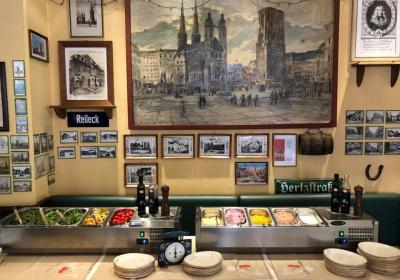
Address: KleineKlausstraße 3, 06108 Halle (Saale), Germany
Marktkirche Unser Lieben Frauen

Address: An der Marienkirche 2 06108 Halle, Germany +49 345 5170894
Burg Giebichenstein
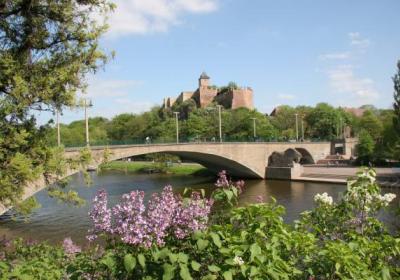
Address: Neuwerk 7 06108 Halle, Germany +49 345 7751 ext. 50
Leipziger Strabe
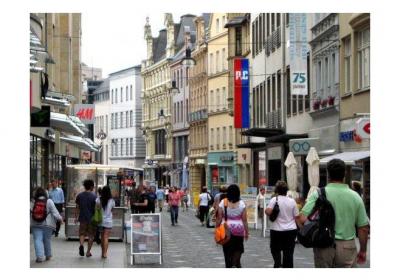
Address: Halle, Leipziger Str.
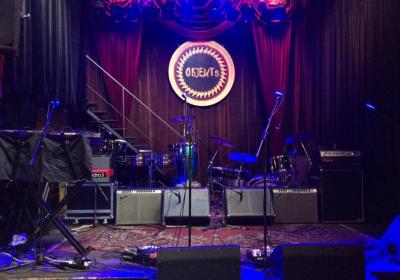
Address: Seebener Str. 5, 06114 Halle (Saale), Germany
Kuntsmuseum Moritzburg

Address: Halle (Saale), Germany
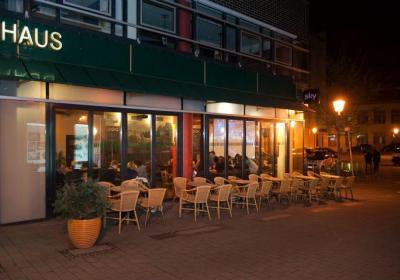
Address: Halle, Germany
Okoase Kliene Ulrichstrasse

Address: Kleine Ulrichstraße 2 06108 Halle, Germany +49 345 2901604
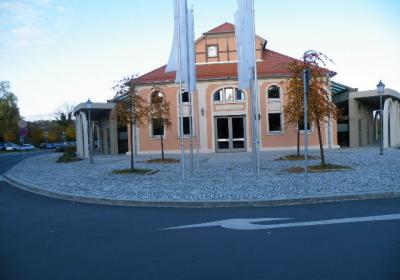
- Things to do in Hamburg
- Things to do in Assen
- Things to do in Bremen
- Things to do in Frankfurt
- Things to do in Munich
- Things to do in Leipzig
- What to do in Halle in 1 day
- What to do in Halle in 2 days
The Excellence Center in Europe 🇩🇪
Dedicated To Serve You And Our Community Since 2018
- Why Choose Us?
- Our Location
- Online Arabic Courses
Home » Why Halle?
Why Visit Halle (Saale), Germany? Traveling to any country or city in the world requires a reason or a motivation. There are different ways each country and city attracts travelers, volunteers, and students to pack their bags and visit. Halle (Saale) is no different. Halle has its own attractions that draw people to its city from thousands of miles away. Individuals have their own reasons and motivations as well to travel to a specific place, including work opportunities, education, recreation, and tourism to various historical sites and archeological areas.
This all leads to questions of why should I visit Halle (Saale), what does the city offer for internationals , and why should I visit and learn in Halle as opposed to Hamburg, Stuttgart or Munich? If you are pondering the same questions, here are 6 reasons why you should come to Halle (Saale), Germany:
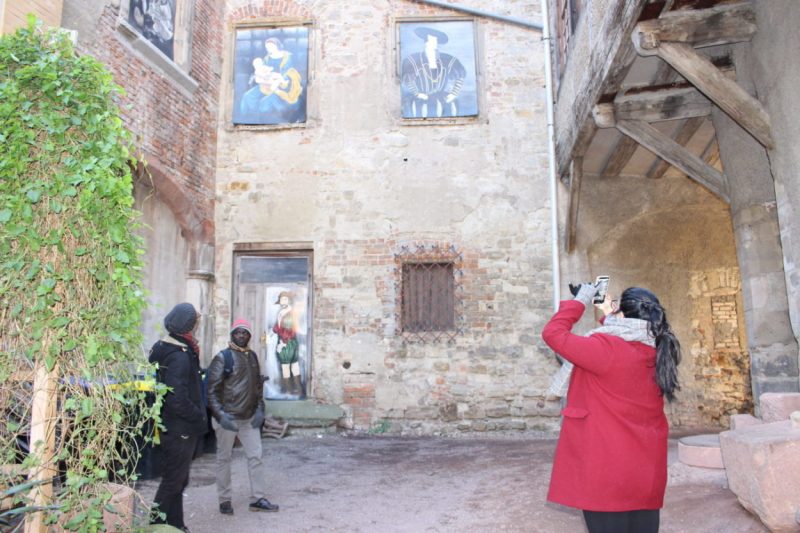
The Beauty and Historical Sites
Halle (Saale) is considered one of the oldest cities in Germany and Saxony Anhalt . It has a rich history and many historical sites to discover. For instance, the Händelhaus is located very close to the marketplace. Other sites worth visiting during your time in Halle include the Franckeschen Stiftungen, the Händelhaus, University Square, Joliot-Curie-Square & Opera House, and Ulrich Church.
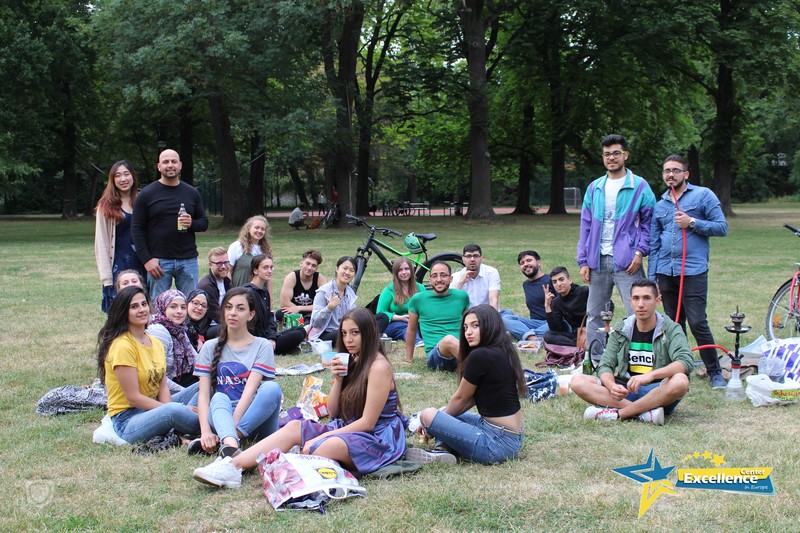
The City Size and Ease of Getting Around
Halle has around 236,000 inhabitants, which is considered small compared to Berlin or Hamburg . This makes it very easy to move around the city. In Berlin, it can take travelers around 45 minutes by bus or train to go from the north to the south of the city. In Halle (Saale), you do not waste so much time on transportation. It takes only about 10-15 minutes to go to the farthest point in the city. You can easily walk around, ride your bike, or take the street train in Halle.
Affordable Prices
Compared to other EU countries, Germany is considered to be an inexpensive country to live in. As a traveler, you are most likely thinking about the budget of your trip to Germany. We know that many of you, especially students, try your best to spend as little as possible when traveling. You may even choose a country based on how well it fits within your budget.
When discussing the affordability of life in Halle, we want to provide you with several examples. Here, you can have a full lunch or dinner for 5 euro. Transportation in Halle is also cheap within the city. Street trains and bus fees can range from 1,40 to 2,50 euro one-way, per person, depending on the distance of the ride. Between cities, a bus from Halle to Berlin, for instance, will range from 7-10 euro. Hotels in Halle are affordable as well, with the average price of a night’s stay ranging from 30-40 euro.

Magical, Green Spaces
Halle (Saale) offers a plethora of green spaces, swimming lakes, and numerous public parks and gardens to relax in. These places provide locals and international visitors with a happy slice of nature in the city. The largest public park is Peißnitz where you can run, rest, read, swim, enjoy the view of the river, or have a barbecue with friends.
In Halle (Saale) anyone can walk freely and safely around the city. It is, of course, also safe for female travelers and solo travelers .

Diversity of Individuals
People from different cultures, backgrounds, and countries reside in Halle. Here, travelers can meet many new people and enjoy different cultural cuisine from local restaurants located in the city center. You can also meet a lot of German and international students in the city. Those who wish to improve their German language skills will have plenty of opportunities to practice the language with the people they meet.
Search Our Website
Join our family 2024/2025.
Join our family in Germany and explore diverse volunteer and internship programs for 2024/2025 with the Excellence Center in Europe! Perfect for students and individuals seeking summer opportunities, our programs cover teaching English, supporting refugees in Germany, delving into Media and Journalism, and learning German or Arabic. It’s a fantastic way to have a unique and fulfilling experience in Europe!
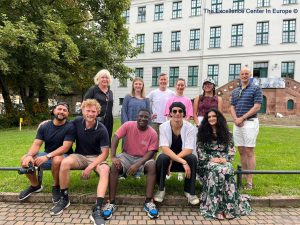
Reviews ⭐ & Awards
Follow us on instagram, volunteer & internship programs.
The Excellence Center in Europe provides volunteer and internship programs in Teaching English, refugee support, media and journalism, and community development in Germany. These volunteer and internship opportunities are ideal for individuals keen on exploring Europe, immersing themselves in German culture, and making a meaningful contribution by working with refugees and migrants in Halle, Germany.
Voted Best Language School for 2021 & 2022

Our Reviews on GoAbroad ⭐
Ec palestine 🇵🇸.
- Volunteer and Study Arabic in Palestine
- Human Rights Program in Palestine
- Teach English in Palestine
- Internship in Palestine (1-3 months)
- Arabic Courses in Hebron, Palestine
- Women’s Rights Program in Palestine
Find US on Idealist

Voted for Best Volunteer Provider for 2021 & 2022

Our Summer Internship
Our Summer internship in Germany programs are perfect for students seeking international experiences in Europe, even in between semesters. There is also university credit available for those looking for an internship to fill school requirements. The EC accepts international volunteers all year long, but the Summer is the most popular time to join our family- and for good reason! The EC provides one of the best rated Summer internships in Europe.
Our Family In Pictures
Copyright © 2024 The Excellence Center in Europe 🇩🇪
Excellence Center 🇩🇪 In Europe

IMAGES
VIDEO
COMMENTS
If you stroll through the streets of the Old Town, you will sense history at every turn. But Halle is also a contemporary city with bustling cafés, restaurants and bars. At the centre of the historical Marktplatz square is the statue of the composer George Frideric Handel, who was born in Halle in 1685. From here you can make out the ...
1. Landemuseum für Vorgeschichte. 215. Science Museums. The State Museum of Prehistory in Halle (Saale) is home of the world-famous Nebra Sky Disc and ranks among the most renowned archaeological museums in Central Europe. It is the oldest purpose-built museum for prehistoric archaeology in Germany.
All through the Middle Ages up to 1680 Halle was part of the Archbishopric of Magdeburg, whose ruling archbishop-electors founded stately castles in the city at Moritzburg and the Neue Residenz. Let's explore the best things to do in Halle: 1. Marktkirche Unser Lieben Frauen. Source: Harald Henkel / flickr.
Halle is the largest city in Saxony-Anhalt, Germany with a population of 233,700. Located on the river Saale, it is often referred to as Halle an der Saale, or Halle (Saale) for short, to distinguish it from other municipalities in Germany sharing the same name. Halle has always been an important industrial centre - its industrial heritage ...
Top 10 sights A visit to these highlights should not be missing on any city tour Sparking a passion for Halle from the very first second - that's what we want to do with our recommendation for the TOP Ten sights!The best-of of the city should give an impression of why we are in love with Halle and a little of this feeling should spill over to our visitors.
Overall, the Peißnitz Island in Halle, Germany, is a must-visit for nature lovers and outdoor enthusiasts alike. With its stunning landscapes, peaceful atmosphere, and numerous recreational opportunities, it provides the perfect escape from the hustle and bustle of city life. Whether you are looking for a place to relax, enjoy a picnic, or ...
An employee makes chocolates at the Halloren chocolate factory. Photo: Thomas Ziegler/Stadt Halle (Saale) Worth a trip. Seven of Germany's 52 UNESCO World Heritage Sites can be found in and around Halle alone: The Nebra Sky Disc in the Halle State Museum of Prehistory, the majestic Naumburg Cathedral, the idyllic Garden Kingdom of Dessau-Wörlitz, the pioneering Bauhaus in Dessau and Weimar ...
Welcome to Halle (Saale). Look forward to a mixture of authentic big city and young art scene, award-winning freethought theatre and original nightlife, creative open spaces and the cosiness of a charming, compact old town. In short: when you visit the city of Handel, you will experience a unique, vibrant atmosphere that will captivate you.
Things to Do in Halle (Saale), Germany: See Tripadvisor's 8,836 traveller reviews and photos of Halle (Saale) tourist attractions. Find what to do today, this weekend, or in May. ... Few rides are available. A bit crowdy place but must visit place in Halle. Read more. Review of: The Gobel Fountain. Written 7 November 2017. This review is the ...
Marktkirche Unser Lieben Frauen. A 16th-century Gothic-style church located in the center of Halle, Germany. What to see or do: Admire the beautiful architecture of the church, which has survived centuries of wars and conflicts. Take a guided tour to learn more about the history of the church and the city.
A mix of the charming, modern, and tried and true. See all. Dorint Charlottenhof Halle (Saale) 262. from $89/night. 2024. H+ Hotel Leipzig-halle. 312.
Halle (Saale), or simply Halle (German:; from the 15th to the 17th century: Hall in Sachsen; until the beginning of the 20th century: Halle an der Saale [ˈhalə ʔan deːɐ̯ ˈzaːlə] ⓘ; from 1965 to 1995: Halle/Saale) is the largest city of the German state of Saxony-Anhalt, the fifth most populous city in the area of former East Germany after Berlin, Leipzig, Dresden and Chemnitz as ...
You can even hear what some of the instruments in the musical instrument exhibition sound like. Opening times: Tuesday to Sunday: 10 am-6 pm. Come and explore the permanent exhibition called "HANDEL - The European" and admire musical instruments dating back six centuries at the house in which the famous composer Georg Friedrich Handel was born.
Check out our other curated itineraries that are also filled with jam-packed days: Make the most out of your 1 day in Halle (Saale) by exploring these top visited places: Zoologischer Garten Halle (Bergzoo), State Museum of Prehistory Halle (Saale), Bergschenke, and Objekt 5 / Restaurant Ruine.
Travelling to Halle and around: discovering Germany. What to visit in Halle. Sure, here are some of the popular tourist attractions in Halle, Germany: 1. Marktkirche Unser Lieben Frauen: It is an impressive medieval Gothic-style church located in the center of Halle. Its construction began in the 16th century and lasted for over a century.
The History of Halle, Germany. The quaint and historic city of Halle, located on the Saale River in eastern Germany, carries a rich and diverse history that spans across centuries. Nestled in the charming region of Saxony-Anhalt, Halle dates back to the prehistoric era, and impressively, many remnants from these ancient times can still be ...
Marktkirche Halle Visitors Information. The Marktkirche Unser Lieben Frauen in Halle is open for tourist visits: January & February: Monday to Saturday from 11:30 to 16:00. Sunday from 15:00 to 16:00. March to December. Monday to Saturday from 10:00 to 17:00.
🚇 Frankfurt Complete Guide 👉 - https://www.youtube.com/watch?v=sn6LfgfkpDM🏙️ Munich Attractions Guide 👉 - https://www.youtube.com/watch?v=VvRBexhYFy0 ...
Halle, city, Saxony-Anhalt Land (state), east-central Germany.It is situated on a sandy plain on the right bank of the Saale River, which there divides into several arms, 21 miles (34 km) north of Leipzig.. The first evidence of occupation of Halle comes from artifacts of the Upper Paleolithic period. The Neolithic is represented by painted pottery (c. 4000 bc).
1. Landesmuseum fuer Vorgeschichte Halle. 215. Science Museums. The State Museum of Prehistory in Halle (Saale) is home of the world-famous Nebra Sky Disc and ranks among the most renowned archaeological museums in Central Europe. It is the oldest purpose-built museum for prehistoric archaeology in Germany.
If you have plans to visit Germany and are not sure if Halle should be included in your itinerary, keep reading. In this list, we have put together some of the things to do in Halle and around. We have a hunch that if you include this city in your travel plans, you will be thrilled you did so. ... Address: Neuwerk 7 06108 Halle, Germany +49 345 ...
Halle (Saale) is considered one of the oldest cities in Germany and Saxony Anhalt. It has a rich history and many historical sites to discover. For instance, the Händelhaus is located very close to the marketplace. Other sites worth visiting during your time in Halle include the Franckeschen Stiftungen, the Händelhaus, University Square ...
Our most recommended things to do in Halle, Germany. 1. Schkeuditz: 4-Hour Vintage East German Trabant Rental. Rent a Trabant in Schkeuditz and enjoy a different kind of driving experience as you explore Leipzig and the surrounding area. Discover the city at your own pace, visiting the sights and nearby towns of your choosing with 4 hours to ...